VCHPRESENTS CHAMBER: POETRY OF THE HARP – XAVIER DE MAISTRE
VIRTUOSE DE LA HARPE – XAVIER DE MAISTRE EMPEROR CONCERTO AND SYMPHONIE FANTASTIQUE
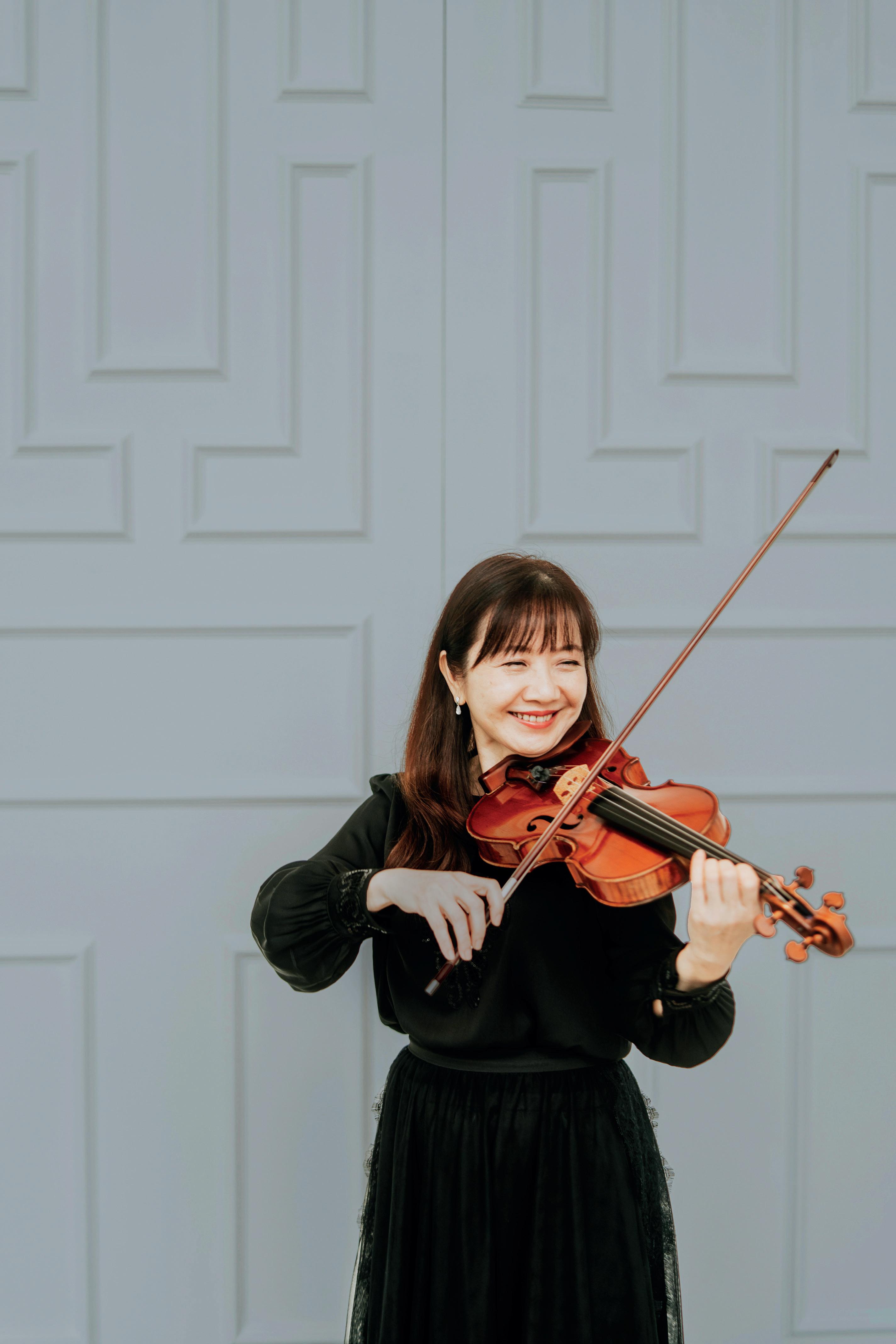
VIRTUOSE DE LA HARPE – XAVIER DE MAISTRE AS PART OF THE 2024 VOILAH! FRANCE SINGAPORE FESTIVAL
SUPPORTED BY

2 first time Is this your at the SSO?
WELCOME! You’ve begun a richly rewarding musical journey and we want you to feel comfortable at the SSO. If there’s something you’ve always wanted to ask, check out our FAQ!
WHAT SHOULD I WEAR?
We don’t enforce any dress code. Many come in business attire or smart casual outfits, and that’s great.
WHEN SHOULD I CLAP?
Many pieces of music have multiple sections called movements. E.g. most concertos have three movements while symphonies usually have four. Traditionally, applause is only expected at the end of the entire work, rather than between each movement.
If you’re unsure, check our programme booklet, or wait for the conductor to put down the baton at the end, and acknowledge the orchestra and audience.
CAN I TAKE PHOTOS AND VIDEOS?
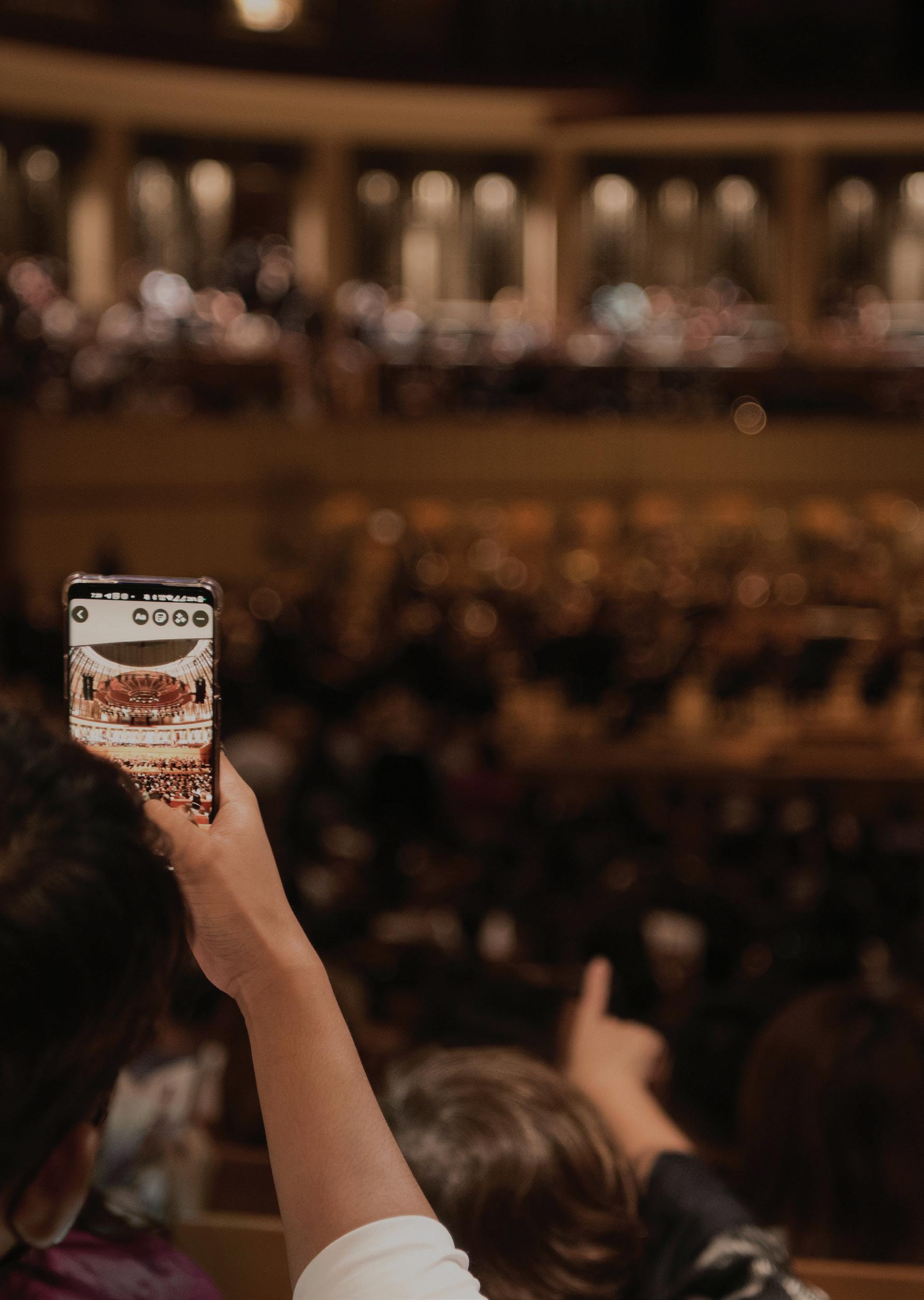
sso.org.sg/experience/first-timers
Video and photography of any kind are not permitted when musicians are actively performing. However, non-flash photography is allowed during bows and applause. Take home a musical memory and tag us on @singaporesymphony!
For more FAQs
POETRY OF THE HARP
XAVIER DE MAISTRE
Wed, 22 May 2024
Victoria Concert Hall
VIRTUOSE DE LA HARPE
XAVIER DE MAISTRE
Sat, 25 May 2024
Esplanade Concert Hall
EMPEROR CONCERTO AND SYMPHONIE FANTASTIQUE
Sat, 1 Jun 2024
Esplanade Concert Hall
For the enjoyment of all patrons during the concert:
• Please switch off or silence all electronic devices.
• Please minimise noises during performance. If unavoidable, wait for a loud section in the music.
• No photography, video or audio recording is allowed when artists are performing.
• Non-flash photography is allowed only during bows and applause when no performance is taking place.
Go green. Digital programme books are available on www.sso.org.sg.
Photographs and videos will be taken at these events, in which you may appear. These may be published on the SSO’s publicity channels and materials. By attending the event, you consent to the use of these photographs and videos for the foregoing purposes.
Cover photo: Sloth Creatives
12
18
26
23 4 2
May-Jun 2024
Since its founding in 1979, the Singapore Symphony Orchestra (SSO) has been Singapore’s flagship orchestra, touching lives through classical music and providing the heartbeat of the cultural scene with its 44-week calendar of events.
In addition to its subscription series concerts, the orchestra is well-loved for its outdoor and community appearances, and its significant role educating the young people of Singapore through its school programmes. The SSO has also earned an international reputation for its orchestral virtuosity, having garnered sterling reviews for its overseas tours and many successful recordings. In 2021, the SSO clinched third place in the prestigious Orchestra of the Year Award by Gramophone. In 2022, BBC Music Magazine named the SSO as one of the 23 best orchestras in the world.
In July 2022, the SSO appointed renowned Austrian conductor Hans Graf as its Music Director, the third in the orchestra’s history after Lan Shui (1997–2019) and Choo Hoey (1979–1996). Prior to this, Hans Graf served as Chief Conductor from 2020.
The orchestra performs over 60 concerts a year, and its versatile repertoire spans all-time favourites and orchestral masterpieces to exciting cutting-edge premieres. Bridging the musical traditions of East and West, Singaporean and Asian musicians and composers are regularly showcased in the concert season. The SSO makes its performing home at the 1,800-seat state-of-theart Esplanade Concert Hall. More intimate works, as well as outreach and community performances take place at the 673-seat Victoria Concert Hall, the Home of the SSO.
Beyond Singapore, the SSO has performed in Europe, Asia and the United States. In May 2016 the SSO was invited to perform at the Dresden Music Festival and the Prague Spring International Music Festival. This successful fivecity tour of Germany and Prague also included the SSO’s second performance at the Berlin Philharmonie. In 2014, the SSO’s debut at the 120th BBC Proms in London received praise in major UK newspapers The Guardian and The Telegraph. The SSO has also performed in China on multiple occasions.
The SSO has released more than 50 recordings, with over 30 on the BIS label. Recent critically acclaimed albums include Herrmann’s Wuthering Heights (Chandos) and Scriabin - Poems of Ecstasy and Fire (BIS). Following the Four Seasons album on Pentatone, a complete Mozart Violin Concerto cycle with Chloe Chua and Hans Graf will be released in 2024. The SSO also leads the revival and recording of significant works such as Kozłowski’s Requiem, Ogerman’s Symbiosis (after Bill Evans) and violin concertos by Robert Russell Bennett and Vernon Duke.


SINGAPORE SYMPHONY ORCHESTRA 2
The SSO has collaborated with such great artists as Vladimir Ashkenazy, Gustavo Dudamel, Charles Dutoit, Joe Hisaishi, Neeme Järvi, Okko Kamu, Hannu Lintu, Andrew Litton, Lorin Maazel, Martha Argerich, Ray Chen, Diana Damrau, Stephen Hough, Janine Jansen, Leonidas Kavakos, Lang Lang, Yo-Yo Ma, Gil Shaham and Krystian Zimerman.
The SSO is part of the Singapore Symphony Group, which also manages the Singapore Symphony Choruses, and the Singapore National Youth Orchestra, as well as the VCHpresents chamber music series, the Singapore International Piano Festival and the biennial National Piano & Violin Competition.
Our Story
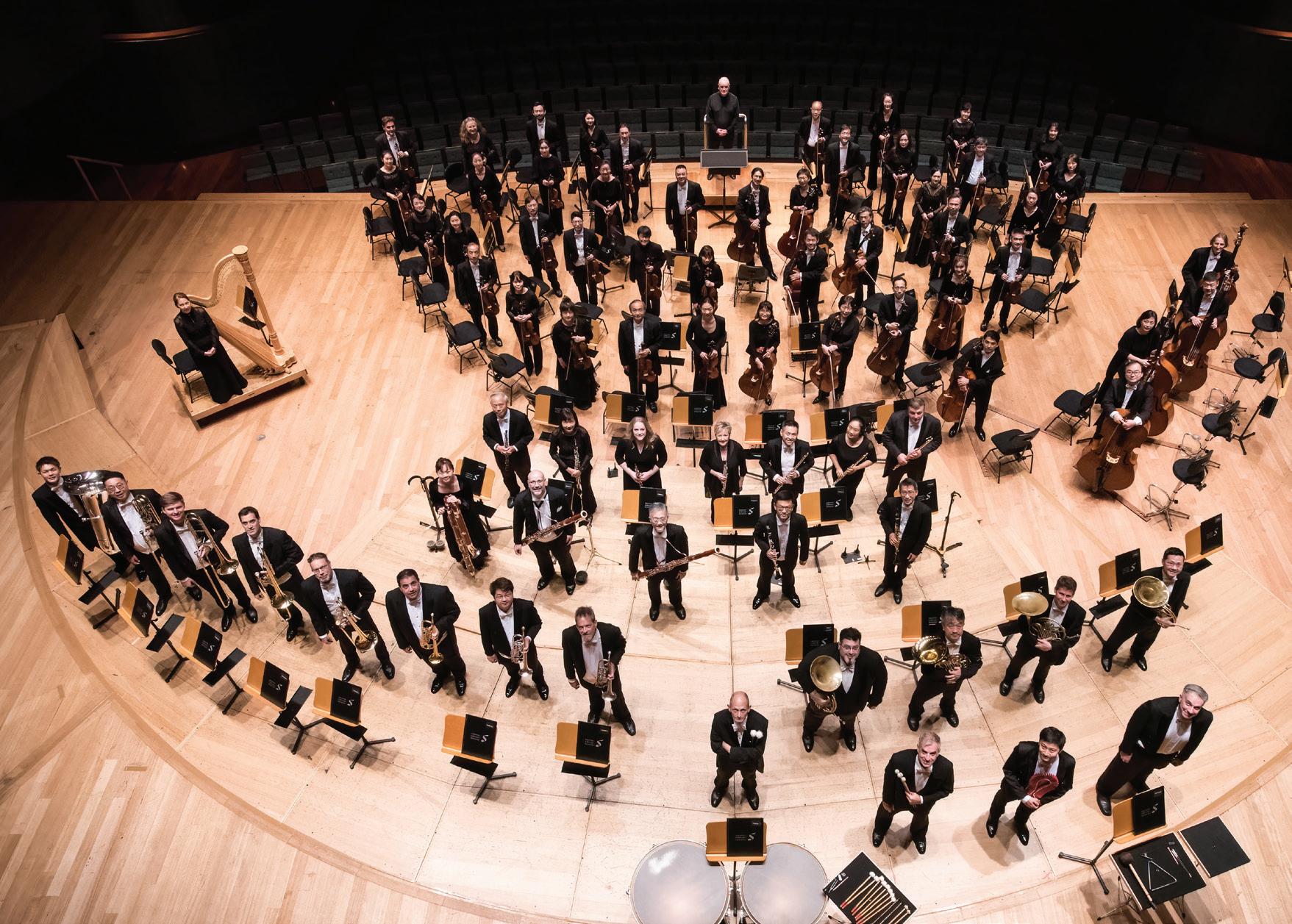


Singapore Symphony Orchestra
The Group’s vision is to be a leading arts organisation that engages, inspires and reflects Singapore through musical excellence. Our mission is to create memorable shared experiences with music. Through the SSO and its affiliated performing groups, we spread the love for music, nurture talent and enrich our diverse communities.
3

PIERRE BLEUSE
conductor
French conductor Pierre Bleuse is fast becoming one of the most exciting and sought-after conductors. In September 2023, he becomes Music Director of the prestigious Ensemble Intercontemporain for a first term of four years, succeeding Matthias Pintscher who has held this position since 2013. His contract as Chief Conductor of Odense Symphony Orchestra is renewed until 2026. He is also the Artistic Director of renowned Pablo Casals Festival since 2021.
Among highlights of the 2023/24 season, Pierre Bleuse is invited to guest-
conduct major international orchestras: Royal Concertgebouw Orchestra, City of Birmingham Symphony Orchestra, BBC Symphony Orchestra, Tokyo Symphony Orchestra, Orchestre National de Lyon, Orquesta Nacional de España, Royal Stockholm Philharmonic Orchestra, Singapore Symphony Orchestra and NDR Radiophilharmonie Hannover for a concert at the celebrated Elbphilharmonie.
Other recent highlights include invitations to such major orchestras as Orchestre de Paris, Orchestre National de France, Orquestra Sinfônica do Estado de São Paulo, MDR Sinfonieorchester Leipzig, TonkünstlerOrchestra Niederösterreich, Orchestre de la Suisse Romande, Sinfonieorchester Basel, Orchestre National du Capitole de Toulouse, Polish National Radio Symphony Orchestra; Munich, Basel and Paris chamber orchestras; Russian National Orchestra, Brussels Philharmonic, Orchestre National de Belgique, Orchestre Philharmonique Royal de Liège, China National Symphony Orchestra and Utah Symphony.
He regularly works with some of the most sought-after international soloists such as Joyce DiDonato, Karita Mattila, Sol Gabetta, Patricia Kopatchinskaja, Nicholas Angelich, Bertrand Chamayou, Emmanuel Pahud, Renaud and Gautier Capuçon.
He studied conducting with Jorma Panula in Finland and Laurent Gay at the Haute École de Genève.
harrisonparrott.com/artists/pierre-bleuse
PIERROT DETRY EMPEROR CONCERTO AND SYMPHONIE FANTASTIQUE | 1 JUN 2024 VIRTUOSE DE LA HARPE –XAVIER DE MAISTRE | 25 MAY 2024 4
© MARINE
XAVIER DE MAISTRE harp
Xavier de Maistre is one of today’s leading harpists and a profoundly creative musician. As a fierce champion of his instrument, he has broadened the harp repertoire, commissioning new works from composers. He also creates transcriptions of important instrumental repertoire.
Xavier started his 2023/24 season by opening the Atlanta Symphony’s concert season under Nathalie Stutzmann. From January 2024, Xavier de Maistre gives the premieres of Peter Eötvös’s first harp concerto, specially created for him, with cocommissioners Orchestre Philharmonique de Radio France, Rundfunk-Sinfonieorchester Berlin, Orchestre de la Suisse Romande, Fundação Casa da Música, NHK Symphony Orchestra and Radio-Symphonieorchester Wien. His Serenata Latina duo with Rolando Villazon leads him to such prestigious venues and festivals as Philharmonie de Paris, New York’s Lincoln Center, Mozarteum Salzburg and Yerevan Festival.
He is regularly invited by first-class orchestras across the globe and works with conductors including Sir André Previn, Sir Simon Rattle, Riccardo Muti, Daniele Gatti, Philippe Jordan, Bertrand de Billy, Andrés Orozco-Estrada, Daniel Harding, Susanna Mälkki and Mirga Gražinytė-Tyla.
Born in Toulon, Xavier studied the harp with Vassilia Briano at his local conservatoire, before perfecting his technique with
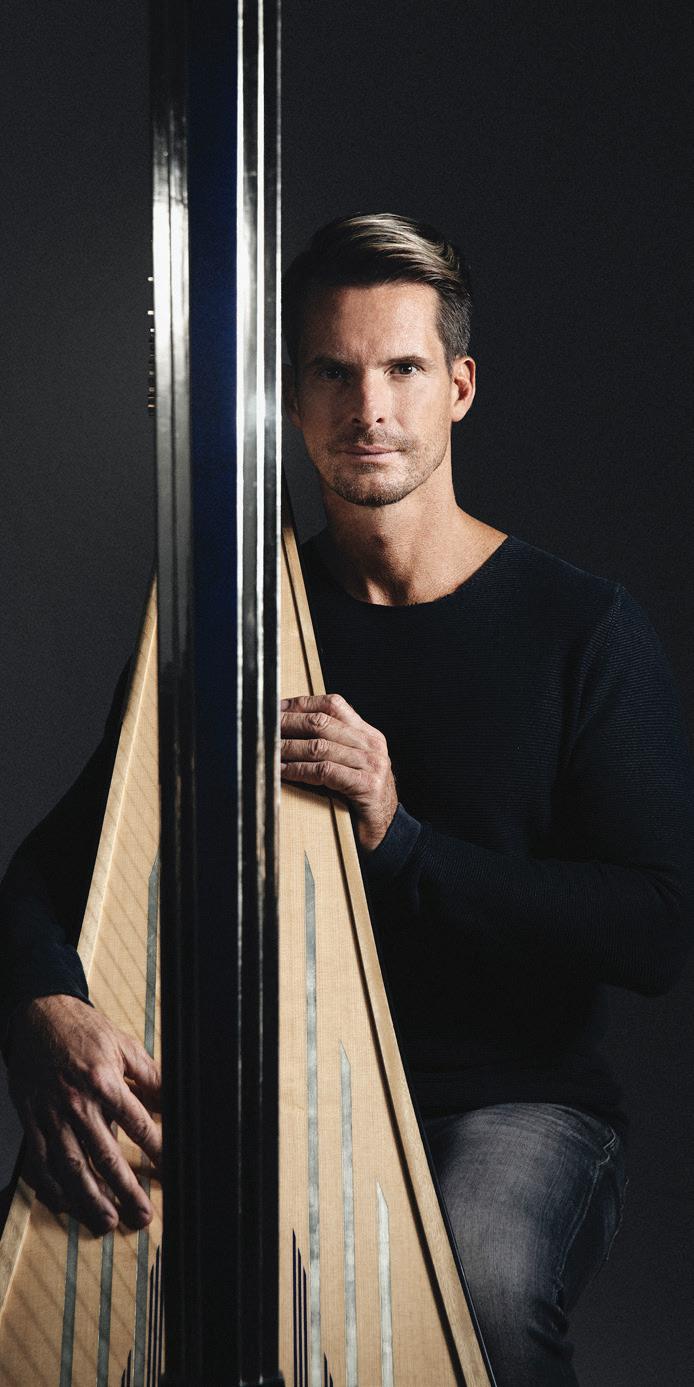
Catherine Michel and Jacqueline Borot in Paris. He also studied in Sciences-Po Paris and then at the London School of Economics. In 1998 he was awarded First Prize (and two interpretation prizes) at the prestigious USA International Harp Competition (Bloomington) and became the first French musician to be admitted at the Wiener Philharmoniker that same year.
He has taught at Musikhochschule in Hamburg since 2001.
He plays on a Lyon & Healy instrument. harrisonparrott.com/artists/xavierde-maistre
POETRY OF THE HARP –XAVIER DE MAISTRE | 22 MAY 2024 VIRTUOSE DE LA HARPE –XAVIER DE MAISTRE | 25 MAY 2024 5
© NIKOLAJ LUND

FOR A CARING & RESILIENTSingap ore

Paul Lewis is one of the foremost interpreters of the Central European piano repertoire, his performances and recordings of Beethoven and Schubert receiving universal critical acclaim. He was awarded CBE for his services to music, and the sincerity and depth of his musical approach have won him fans around the world.
This global popularity is reflected in the world-class orchestras with whom he works, including the Berlin Philharmonic, Chicago Symphony, London Symphony, Philharmonia, Bavarian Radio Symphony, NHK Symphony, New York Philharmonic, LA Philharmonic, Royal Concertgebouw and Leipzig Gewandhaus orchestras. His close relationship with Boston Symphony Orchestra led to his selection as the 2020 Koussevitzky Artist at Tanglewood.
With a natural affinity for Beethoven, he took part in the BBC’s three-part documentary Being Beethoven and performed a concerto cycle at Tanglewood in summer 2022. He has performed the cycle all over the world, and was the first pianist to play the complete cycle in a single season at the BBC Proms in 2010.
Beyond many award-winning Beethoven recordings, his discography with Harmonia Mundi also demonstrates his characteristic
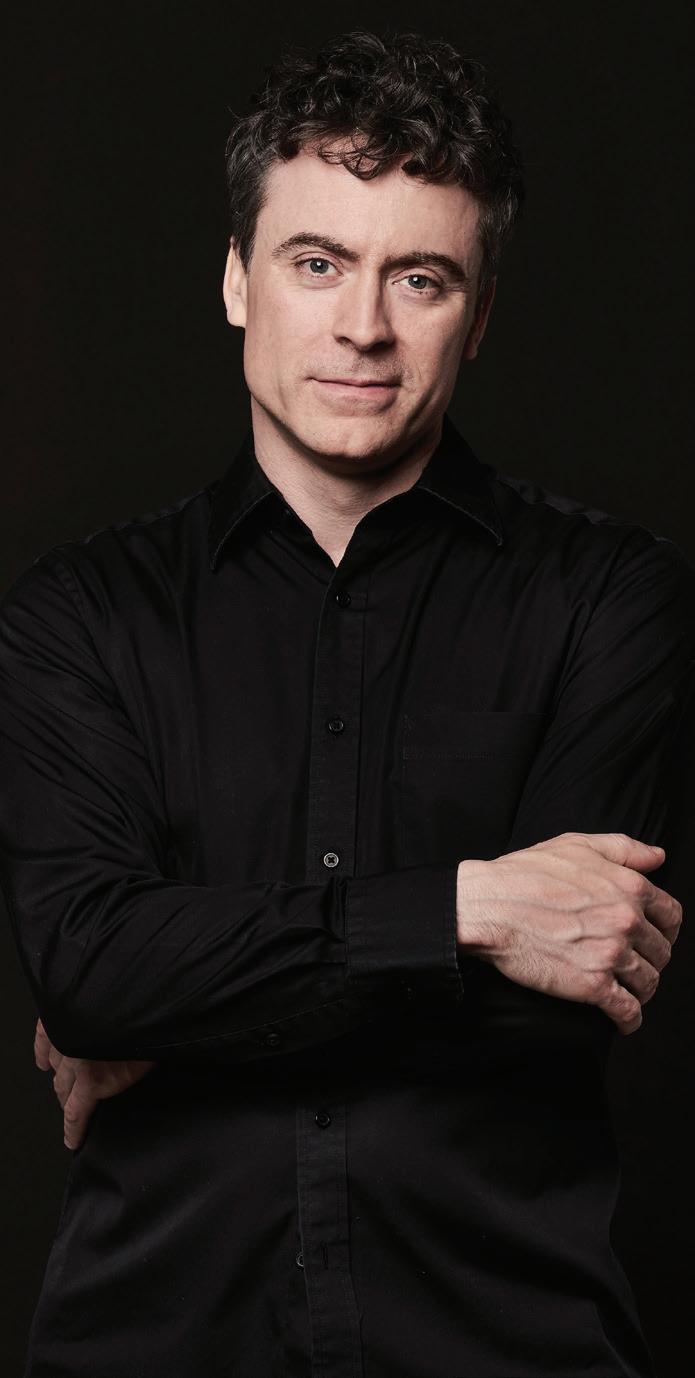
depth of approach in Romantic repertoire such as Schumann, Mussorgsky, Brahms and Liszt.
In chamber music, Paul Lewis works closely with tenor Mark Padmore in lied recitals around the world – they have recorded three Schubert song cycles together. Between 2022 and 2024, Paul Lewis embarks on a new Schubert Piano Sonata Series where he will present the completed sonatas from the last 12 years of Schubert’s life at venues around the world. Lewis is co-Artistic Director of Midsummer Music, an annual chamber music festival held in Buckinghamshire, UK.
maestroarts.com/artists/paul-lewis
PAUL LEWIS piano
EMPEROR CONCERTO AND SYMPHONIE FANTASTIQUE | 1 JUN 2024 7
© KAUPO KIKKAS
The Orchestra
HANS GRAF
Music Director
RODOLFO BARRÁEZ
Associate Conductor
CHOO HOEY
Conductor Emeritus
LAN SHUI
Conductor Laureate
EUDENICE PALARUAN
Choral Director
WONG LAI FOON
Choirmaster
ELLISSA SAYAMPANATHAN
Assistant Choral Conductor
FIRST VIOLIN
(Position vacant) Concertmaster,
GK Goh Chair
Kong Zhao Hui1
Associate Concertmaster
Chan Yoong-Han2
Fixed Chair
Cao Can*
Chen Da Wei
Duan Yu Ling
Foo Say Ming
Jin Li
Kong Xianlong
Cindy Lee
Karen Tan
William Tan
Wei Zhe
Ye Lin*
Zhang Si Jing
SECOND VIOLIN
Michael Loh Associate Principal
Nikolai Koval*
Sayuri Kuru
Hai-Won Kwok
Margit Saur
Shao Tao Tao
Tseng Chieh-An
Wu Man Yun*
Xu Jueyi*
Yeo Teow Meng
Yin Shu Zhan*
Zhao Tian
VIOLA
Manchin Zhang Principal, Tan Jiew Cheng Chair
Guan Qi Associate Principal
Gu Bing Jie* Fixed Chair
Marietta Ku
Luo Biao
Julia Park
Shui Bing
Janice Tsai
Dandan Wang
Yang Shi Li
CELLO
Ng Pei-Sian Principal, The HEAD Foundation Chair
Yu Jing Associate Principal
Guo Hao Fixed Chair
Chan Wei Shing
Christopher Mui
Jamshid Saydikarimov
Song Woon Teng
Wang Yan
Wu Dai Dai
Zhao Yu Er
DOUBLE BASS
Yang Zheng Yi Associate Principal
Karen Yeo Fixed Chair
Olga Alexandrova
Jacek Mirucki
Guennadi Mouzyka
Wang Xu
THE ORCHESTRA 8
FLUTE
Jin Ta Principal, Stephen Riady Chair
Evgueni Brokmiller Associate Principal
Roberto Alvarez
Miao Shanshan
PICCOLO
Roberto Alvarez Assistant Principal
OBOE
Rachel Walker Principal
Pan Yun Associate Principal
Carolyn Hollier
Elaine Yeo
COR ANGLAIS
Elaine Yeo Associate Principal
CLARINET
Ma Yue Principal
Li Xin Associate Principal
Liu Yoko
Tang Xiao Ping
BASS CLARINET
Tang Xiao Ping Assistant Principal
BASSOON
Marcelo Padilla^ Principal
Liu Chang Associate Principal
Christoph Wichert
Zhao Ying Xue
CONTRABASSOON
Zhao Ying Xue Assistant Principal
HORN
Austin Larson Principal
Gao Jian Associate Principal
Jamie Hersch Associate Principal
Marc-Antoine Robillard Associate Principal
Bryan Chong^
Hoang Van Hoc
TRUMPET
Jon Paul Dante Principal
David Smith Associate Principal
Lau Wen Rong
Nuttakamon Supattranont
TROMBONE
Allen Meek Principal
Damian Patti Associate Principal
Samuel Armstrong
BASS TROMBONE
Wang Wei Assistant Principal
TUBA
Tomoki Natsume Principal
TIMPANI
Christian Schiøler Principal
Mario Choo
PERCUSSION
Jonathan Fox Principal
Mark Suter Associate Principal
Mario Choo
Lim Meng Keh
HARP
Gulnara Mashurova Principal
With deep appreciation to the Rin Collection for their generous loan of string instruments. Musician on temporary contract
Kong Zhao Hui performs on a J.B. Guadagnini of Milan, c. 1750, donated by the National Arts Council, Singapore, with the support of Far East Organization and Lee Foundation.
Chan Yoong-Han performs on a David Tecchler, Fecit Roma An. D. 1700, courtesy of Mr G K Goh. Musicians listed alphabetically by family name rotate their seats on a per programme basis.
* ^ 1 2 THE ORCHESTRA 9
Guest Musicians
VIRTUOSE DE LA HARPE – XAVIER DE MAISTRE | 25 MAY 2024
FIRST VIOLIN
Yusuke Hayashi
Guest Concertmaster
Lim Shue Churn
SECOND VIOLIN
Li Qing Guest Principal
Martin Peh
Wan Fangyuan
Yew Shan
VIOLA
Patcharaphan Khumprakob
Yeo Jan Wea
DOUBLE BASS
Guo Shengni Guest Principal
Julian Li
OBOE
Soniya Rakhmatullina
HORN
Alexander Oon
TRUMPET/BUCCINA
Jun Ikebe
Yuki Urushihara
Daiki Yamanoi
TRUMPET
Nitiphum Bamrungbanthum
PERCUSSION
Robert Clarke
Mark De Souza
Ng Sok Wah
Shaun Trubiano
Wannapha Yannavut
HARP
Jana Ang Fries
PIANO/CELESTA
Beatrice Lin
Nicholas Loh
ORGAN
Joanna Rajammal Paul
MANDOLIN
Joel Woods
EMPEROR CONCERTO AND SYMPHONIE FANTASTIQUE | 1 JUN 2024
FIRST VIOLIN
Yusuke Hayashi
Guest Concertmaster
Lim Shue Churn
Violaine Padilla
SECOND VIOLIN
Li Qing Guest Principal
Lee Shi Mei
Wan Fangyuan
Yew Shan
VIOLA
Patcharaphan Khumprakob
Erlene Koh
Martin Peh
DOUBLE BASS
Guo Sheng Ni Guest
Principal
Julian Li
Hibiki Otomo
HORN
Luke Chong
TROMBONE
Christian Goldsmith
TUBA
Henrique Costa
PERCUSSION
Cheong Kah Yiong
CELESTA
Aya Sakou
HARP
Charmaine Teo
GUEST MUSICIANS
10
NEW ALBUM RELEASE

Kozłowski’s Requiem Pentatone Records PTC5187125
A long-forgotten masterpiece in its first modern recording, using a new edition by Hans Graf, realising the Requiem's original 1798 version. The Requiem received its Asian premiere in a performance by the Singapore Symphony in Apr 2023.
Available 19 Apr 2024 In CD and digital formats
POETRY OF THE HARP XAVIER DE MAISTRE
Wed, 22 May 2024
Victoria Concert Hall
Xavier de Maistre harp
GIOVANNI B. PESCETTI
LISZT DE FALLA
FRANCISCO TÁRREGA
SMETANA
GRANADOS
DEBUSSY
HENRIETTE RENIÉ
Sonata in C minor
Le rossignol, S. 250/1
Spanish Dance
Recuerdos de la Alhambra
The Moldau
Intermission
Valses poéticos
Clair de lune
Légende d'après des Elfes de Leconte de Lisle
7 mins 6 mins 4 mins 5 mins 6 mins 20 mins 12 mins 5 mins 10 mins Concert Duration: approximately 1 hr 30 mins (including 20 mins intermission)
CHECK-IN TO TONIGHT'S CONCERT Scan this QR code with the Singapore Symphony Mobile App.
FOREWORD
For tonight, my first recital in Singapore, I chose a very broad and colourful program with standards of the harp literature but also original arrangements of famous classical pieces like The Moldau and De Falla's Spanish Dance, which will be presented under a new light. Maybe not so many guests have imagined how many colours can be achieved on the harp! I am very excited to invite the audience on this special musical journey where I will show you. Enjoy!
— Xavier de Maistre

Saul and David (1651-1658) by Rembrandt
GIOVANNI BATTISTA PESCETTI (1704–1766)
Sonata in C minor
Pescetti was a Venetian late-Baroque composer who was known for his operas and sonatas for keyboard instruments. He moved to London for a while and was influenced by Handel while both were living there, though he eventually returned to Italy and ended up teaching, with his most famous student being Antonio Salieri. His harpsichord sonatas have remained in the repertoire as teaching material, though their musical quality means that arrangements have also been made for other instruments, most notably the harp (by Salzedo). The C minor sonata is an elegant example of high Baroque style, and its fast-slow-fast movements are pleasantly balanced.
POETRY OF THE HARP –XAVIER DE MAISTRE | 22 MAY 2024
13
FRANZ LISZT (1811–1886)
Le rossignol, S. 250/1
Liszt’s Le rossignol (“The Nightingale”) takes as its base the Russian composer Alyabyev’s song of the same name, which was so well-known it was practically a folk song. Liszt, in typical fashion, adds a chromatic introduction, and, in the first statement of the melody, decorates all around it with broken chords and arpeggios, lending it very well to a harp arrangement. The second section, a fast polka-like refrain, is much more virtuosic, with trills, big leaps, and brilliant runs up and down.
MANUEL DE FALLA (1876–1946)
Spanish Dance
Manuel de Falla’s “Spanish Dance” is a wonderful musical interlude from Act 2 of the opera La vida breve (“Life is Short”), unfortunately gaining its quite nondescript title thanks to Fritz Kreisler, who arranged it for violin and piano in the 1920s. It is probably most well-known in that form, even more so than in the original orchestration, though tonight, the music is completely taken over by just one player on one instrument.
FRANCISCO TÁRREGA (1852–1909)
Recuerdos de la Alhambra
The guitar and the harp are both pluckedstring instruments, and there are interesting similarities, especially the potential for playing the same pitch on different strings. In Tárrega’s Recuerdos de la Alhambra, the melody is assigned to a constant tremolo, while the bass and accompaniment are handled by single notes. It is Tárrega’s bestknown piece, and other musicians have also made virtuoso arrangements for violin, viola, or various percussion instruments.
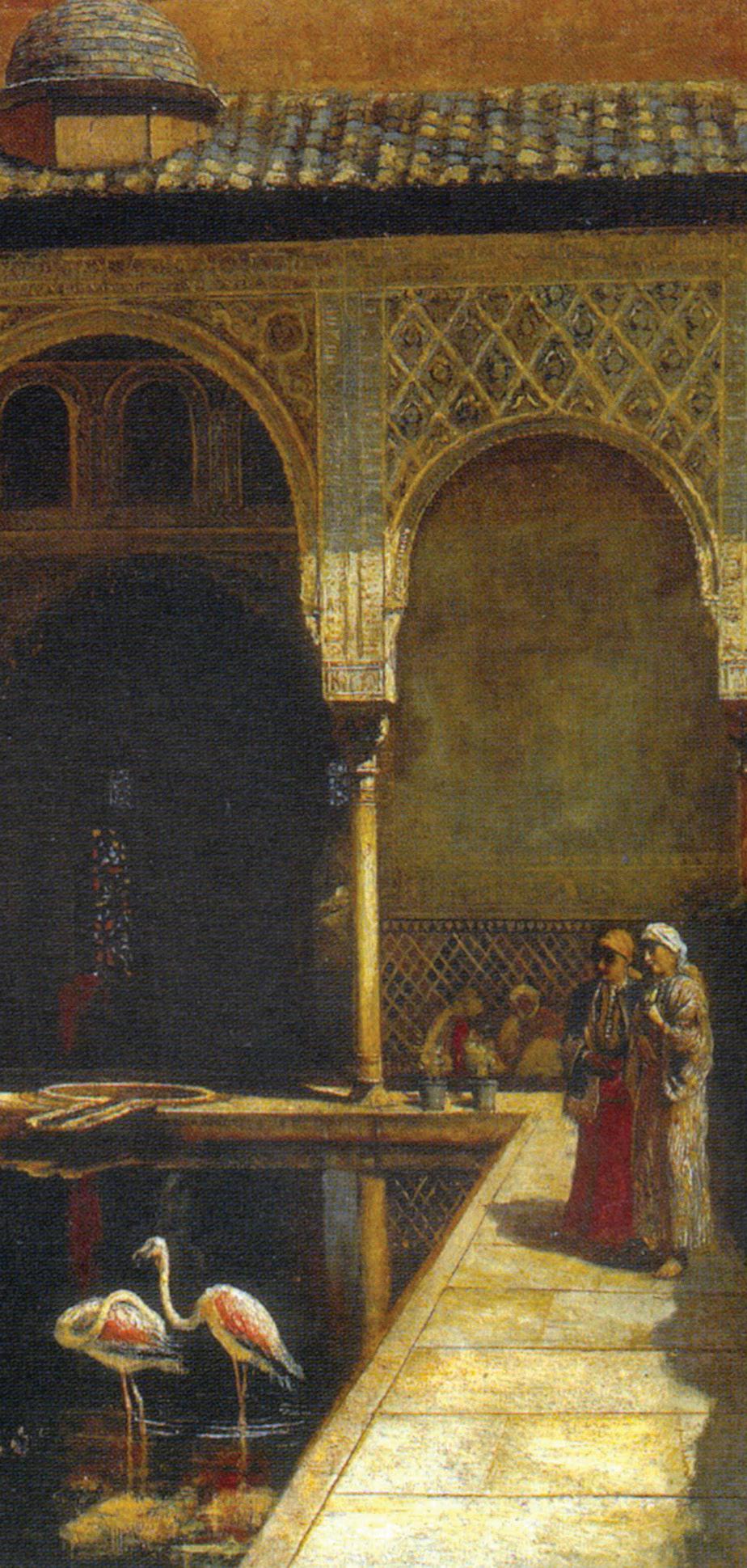
A Court in The Alhambra in the Time of the Moors (1876) by Edwin Lord Weeks
POETRY OF THE HARP –XAVIER DE MAISTRE | 22 MAY 2024
14
BEDŘICH SMETANA (1824–1884)
The Moldau
The Moldau, or Vltava, is the famous second movement from Smetana’s Má vlast (“My Fatherland”) and is essentially a musical depiction of the course of the great river that flows through Prague. From the little splashes of the source, widening into a stately flow with the main melody, and then going on into a hunting party (horn calls), a village wedding (a light, jaunty polka), a moonlit gorge, and the tumultuous St John’s Rapids, before triumphantly returning to the main theme again.
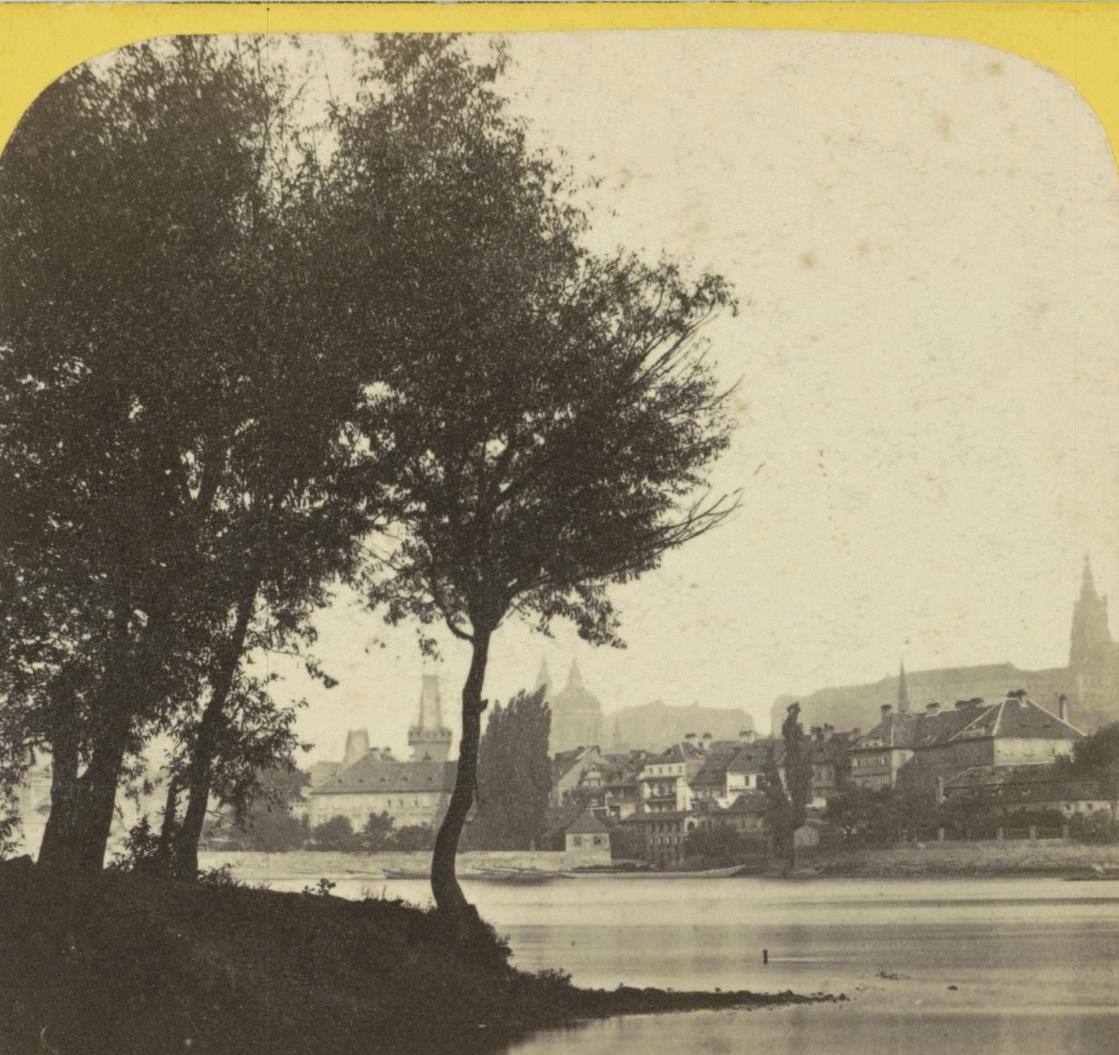
Prague seen from the right bank of the Moldau (1868) albumen print by Charles Gaudin
ENRIQUE GRANADOS (1867–1916)
Valses poéticos
Granados’s Valses poéticos are a set of waltzes written in 1887, when the composer was still a young man. He was searching for a way to meld central-European Romanticism with the flavours of Spain, and these eight short movements have him paring back the rich harmonies and profundity of that same Romanticism to achieve what he wanted: a strain of music filled with passion, though with a distinctly Classical formal sensibility. The introduction is in duple time, and the rest of the waltzes flow easily into one another.
POETRY OF THE HARP –XAVIER DE MAISTRE | 22 MAY 2024
15
CLAUDE DEBUSSY (1862–1918)
Clair de lune
Clair de lune is a staple of every listener’s introduction to classical music, and its inescapable sentimentality is a result of how it over-saturates places like malls, offices, or lifts. But in the concert hall, in the right hands, it remains true to its conception: as a beautiful gem, a depiction of the moon, with soft harmonies and rippling arpeggios as accompaniment.
Debussy’s genius in situating this little sound poem in the middle of an otherwise quite neoClassical suite means that this movement holds all his nostalgia for the Romantic period, even as he looked forward to more modern expressions of his music.

HENRIETTE RENIÉ (1875–1956)
Légende d'après des Elfes de Leconte de Lisle
The final piece, and the only one actually written for harp in tonight’s programme, is a sprawling tone poem based on the narrative of a knight riding to marry his fiancée but getting accosted and eventually being overwhelmed by the power of evil elves. Leconte de Lisle’s dark, dramatic poem was also set by Debussy for soprano and piano, though Henriette Renié’s harp composition is very different: almost rhapsodic, full of cadenzas and improvisatory passages, though the galloping rhythms are firmly illustrations of horse-riding and the whispering in the high register of the harp a kind of ghostly speech. Légende has rightly become recognised as one of the great masterpieces of harp repertoire, played by virtuosos the world around.
POETRY OF THE HARP –XAVIER DE MAISTRE | 22 MAY 2024
Programme notes by Thomas Ang
16
A Seascape, Shipping by Moonlight (1864) by Monet
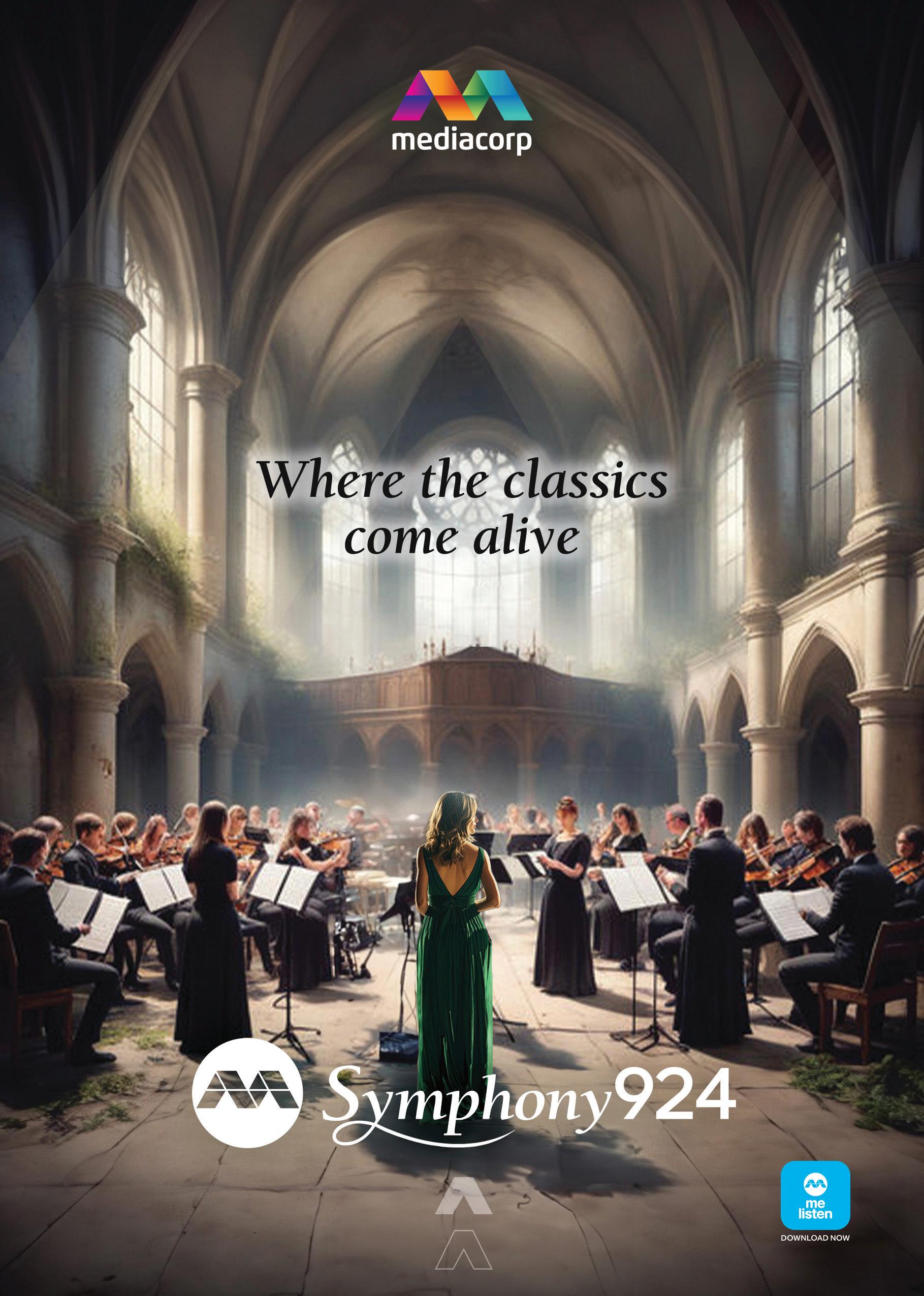
VIRTUOSE DE LA HARPE XAVIER DE MAISTRE FROM ROME TO ARGENTINA
Sat, 25 May 2024
Esplanade Concert Hall
Singapore Symphony Orchestra
Pierre Bleuse conductor
Xavier de Maistre harp*
RESPIGHI
GINASTERA
RESPIGHI
Fountains of Rome
Harp Concerto, Op. 25* [SSO Premiere]
Intermission
Roman Festivals
Duration: approximately 1 hr 40 mins (including 20 mins intermission)
CHECK-IN TO TONIGHT'S CONCERT
Scan this QR code with the Singapore Symphony Mobile App.
As part of the 2024 vOilah! France Singapore Festival
Supported by

15 mins 23 mins 20 mins 24 mins Concert
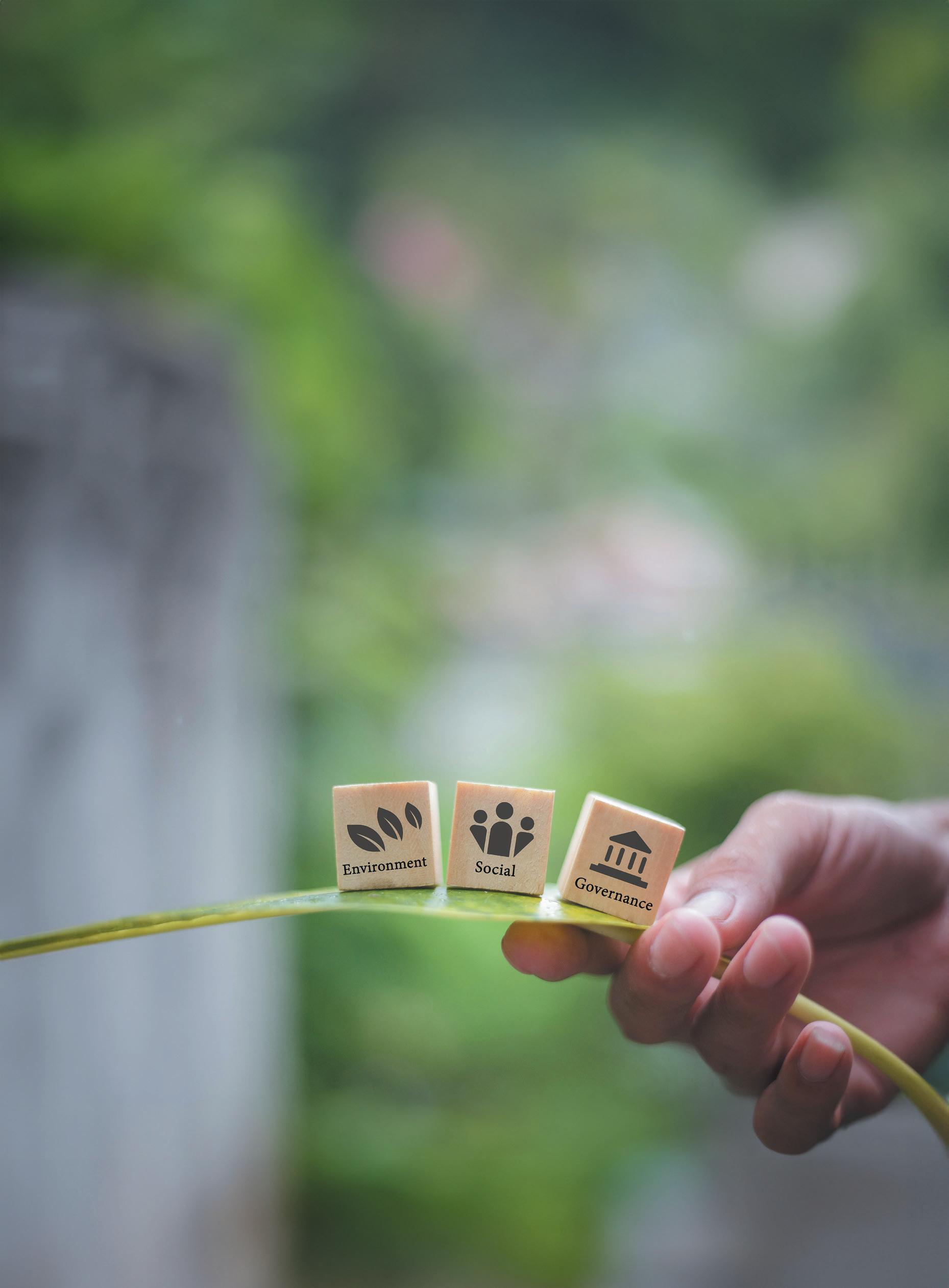
OTTORINO RESPIGHI (1879–1936)
Fountains of Rome (1916)
La fontana di Valle Giulia all'alba
La fontana del Tritone al mattino
La fontana di Trevi al meriggio
La fontana di Villa Medici al tramonto
Leading Italian composer, conductor, musicologist, and violinist Ottorino Respighi was born in 1879 in Bologna. His father Giuseppe, son of a cathedral organist, was a postal worker by profession, but was also a noted pianist and taught music at the Accademia Filarmonica. Giuseppe taught him basic piano and violin, but he largely lost interest in formal lessons when a
glittering harp glissandi conjure up images of sparkling water in which sea nymphs and naiads play
piano teacher hit his hand with a ruler for a mistake in playing. The young Ottorino then practiced on his own in secret, being largely self-taught. He later went to conservatory, studying violin, viola, and organ, as well as composition, after which he had stints in Bologna, St Petersburg (where he met and was influenced by Nikolai Rimsky-Korsakov), and Berlin.
He settled in Rome in 1913 as professor of composition at the Liceo Musicale di Santa Cecilia, and the atmosphere seems to have done him good. In 1916 he completed his tone poem Fontane di Roma (“Fountains of Rome”), P. 106, and it was premiered March 1917 at the Teatro Augusteo. Unfortunately the audience did not like the Wagner programmed for the first half of the concert and many left during the intermission, and Fontane di Roma premiered to a disappointing crowd. Disappointed but not disheartened, Respighi had it performed again in February 1918, when the performance with noted conductor Arturo Toscanini brought the piece to worldwide attention, launching Respighi’s international fame.
Fontane di Roma is in four sections, depicting four historic fountains of Rome. La fontana di Valle Giulia all'alba (“The Fountain of Valle Giulia at Dawn”) opens with the cool mist of dawn at the fountain in the Valle Giulia, a valley in suburban northern Rome, named for the Villa Giulia, built by Pope Julius III in 1551. As the sun slowly rises, oboes and English horns paint a pastoral scene where cows and sheep graze and mosey about.
VIRTUOSE DE LA HARPE –XAVIER DE MAISTRE | 25 MAY 2024
I II III IV
20
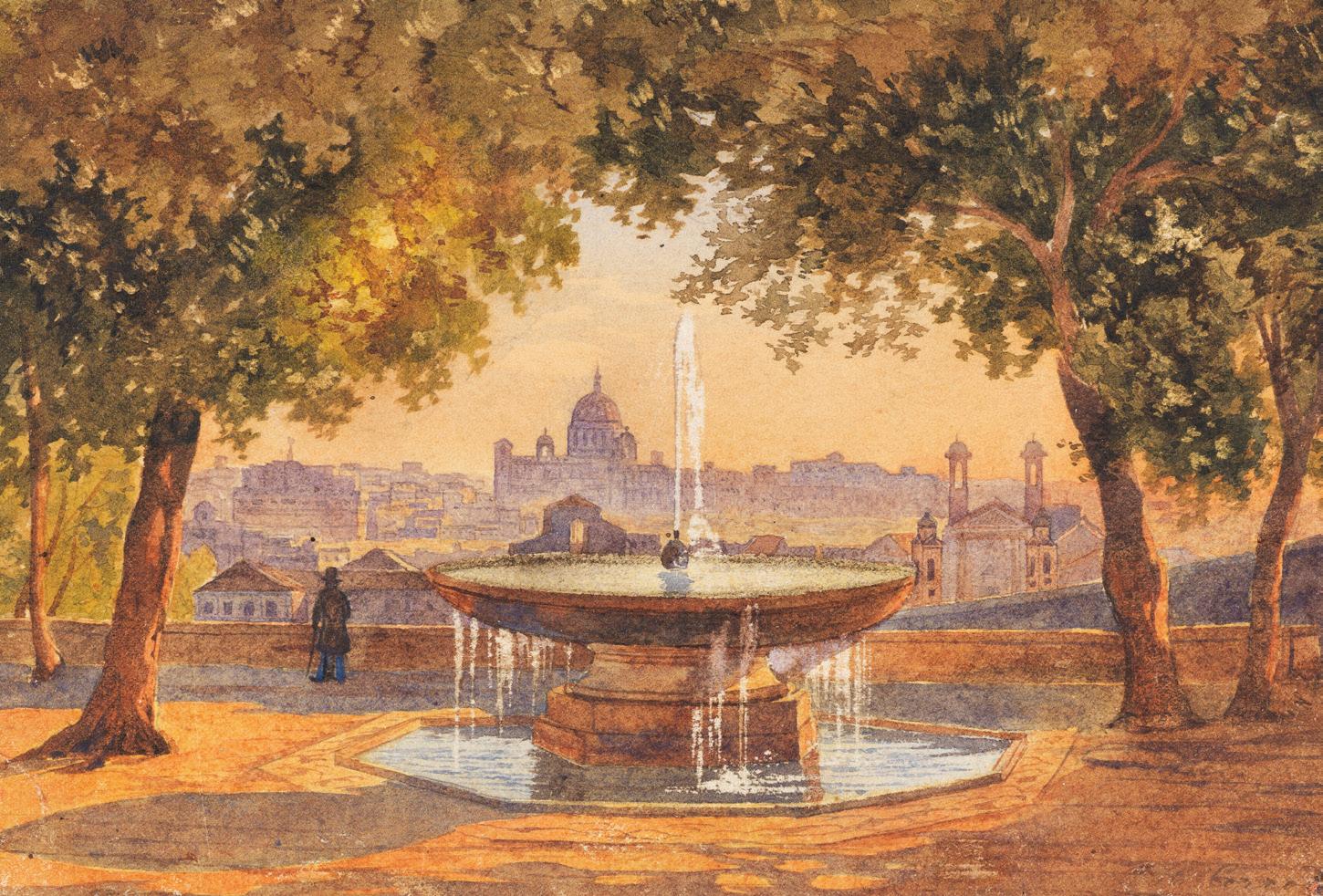
La fontana di Tritone al mattino (“The Fountain of Triton at Morning”) brings us to Bernini’s 1643 Fontana del Tritone in the Piazza Barberini in Central Rome. Brass fanfares evoke the conch shell trumpet held up by Triton, a minor marine god of GrecoRoman mythology, while glittering harp glissandi conjure up images of sparkling water in which sea nymphs and naiads play.
La fontana di Trevi al meriggio (“The Trevi Fountain at midday”) gives us Rome’s grandest fountain, finished in 1762. Majestic brass and swirling strings, punctuated at peaks by crashing percussion, show us Neptune, the god of the sea, on his chariot, atop the waves in a glorious procession of marine figures that disappear quietly below the horizon.
La fontana di Villa Medici al tramonto (“The Villa Medici Fountain at Sunset”) takes us to the restful Villa Medici Fountain in the hills overlooking St Peter’s Basilica. Bells for the 6 p.m. Angelus prayer ring, a cool evening breeze blows and birds sing as twinkling stars (listen out for the shimmering celesta) begin to appear.
Instrumentation
2 flutes, piccolo, 2 oboes, cor anglais, 2 clarinets, bass clarinet, 2 bassoons, 4 horns, 3 trumpets, 3 trombones, tuba, timpani, triangle, cymbals, wind chimes, keyboard glockenspiel, 2 harps, piano, celesta, organ, strings
World Premiere 11 Mar 1917, Rome
First performed by SSO 7 Mar 2006
VIRTUOSE DE LA HARPE –XAVIER DE MAISTRE | 25 MAY 2024
View of St Peter's Basilica from the Villa Medici Fountain (c. 1850) by Salomon Corrodi
21
ALBERTO GINASTERA (1916–1983)
Harp Concerto, Op. 25 (1965) SSO Premiere
Allegro giusto
Molto moderato
Cadenza: Liberamente capriccioso – Vivace
One of the most important 20th century classical composers of the Americas, Alberto Evaristo Ginastera was born in 1916 in Buenos Aires, Argentina, and studied music privately as a child, eventually enrolling in the National Conservatoire of Music. In life he held numerous teaching posts, and his students included Astor Piazzolla and Waldo de los Rios. The changing Argentine political climate of the 1960s caused him to move to the USA and eventually settled in Switzerland, where he died in 1983.
His Harp Concerto, Op. 25, was the result of a 1956 commission from Edna Phillips, harpist of the Philadelphia Orchestra, for her to play in 1958 at the Inter-American Festival. At the time, Ginastera was in a period he described as “Subjective Nationalism”, and nationalism for him meant the use and incorporation of Argentine folk elements. While the guitar is the instrument most associated with Spain, Central and South America today, it was not always so. The harp was the instrument par excellence of the Spanish Renaissance and early Baroque periods, introduced extensively to the New World by the missionaries, and folk harps remain an integral part of traditional music across Latin America, some even played upside-down while walking in marching bands. As such, Ginastera was able to incorporate element of both traditional aesthetics and Latin American harp into his work.
The fiery percussive opening of the Allegro giusto is inspired by the malambo, an Argentine 6/8 dance contest for gauchos (cowboys) in tall boots with spirited stamping of the heels. The octaves of the harp’s opening passage may be a nod to Latin American harp style, in which melodies are doubled in octaves by the right hand. Ginastera’s choice of exotic percussion is distinctively modern, and the music becomes increasingly chromatic. This feverish movement may mark the moment when the harp was pulled out of associations with angels and polite salons, redefining how the harp was played and imagined. In the mysterious Molto moderato, surprising dissonances and close imitation give the impression of layers of tall grass and summer winds in wide open countryside.
An extended cadenza marked Liberamente capriccioso opens the final movement, and here the harp exploits numerous effects: strumming (shades of the guitar?), nails (traditional Latin American harps are played with the nails), pedals, harmonics, and more. As the harp goes into the inevitable glissandi (though unusually chromatic), the orchestra enters and we start the Vivace, jumping into another malambo. The rhythmic drive continues unstoppably, even turning the strings into a percussive accent while the percussion section takes centrestage. Even the harp manages to become a percussion instrument at one point, as the music builds to a dramatic finish.
I II III
VIRTUOSE DE LA HARPE –XAVIER DE MAISTRE | 25 MAY 2024 22
Ginastera, being bogged down by the composition of an opera and a piano concerto, and unsettled by the political turmoil in Argentina, did not manage to complete the harp concerto for 1958. A new target of 1961 was set, but came and went, with the target being bumped twice more until it was finally premiered in 1965. Phillips had retired by this time, so it was Spanish harpist Nicanor Zabaleta who premiered it with the Philadelphia Orchestra under Eugene Ormandy.
OTTORINO RESPIGHI
Roman Festivals (1928)
Instrumentation
2 flutes (1 doubling piccolo), 2 oboes, 2 clarinets, 2 bassoons, 2 horns, 2 trumpets, timpani, bass drum, bongos, claves, cowbells, crotales, field drum, glockenspiel, güiro, maracas, snare drum, suspended cymbal, tambourine, tam-tam, tenor drum, tom-tom, triangle, whip, wood block, xylophone, celesta, strings
World Premiere Feb 1965, Philadelphia
Circenses
Il Giubileo
La Befana I II III IV
L'Ottobrata
After the success of The Fountains of Rome (1916) and The Pines of Rome (1924), in 1928 Respighi again paid homage to the Eternal City with a tone poem. The third of his Roman Trilogy, Feste Romane (“Roman Festivals”) is in four sections, each depicting a scene of celebration in Rome, from ancient to modern times.
Circenses (“Circuses”) takes us back to Ancient Rome, to the Circus Maximus, the largest stadium of its kind in the ancient world. The capacity of the Circus Maximus was 150,000 spectators — for comparison the Singapore National Stadium currently holds a maximum of 55,000. Respighi’s notes for the movement read:
“A threatening sky hangs over the Circus Maximus, but it is the people’s holiday: Ave Nero! The iron doors are unlocked, the strains of a religious song and the howling of wild beasts mingle in the air. The crowd comes
to its feet in a frenzy. Unperturbed, the song of the martyrs gathers strength, conquers and then is drowned in the tumult.”
VIRTUOSE DE LA HARPE –XAVIER DE MAISTRE | 25 MAY 2024
23
Trumpets blare fanfares as gladiators battle to the death and make their brave stands, finally succumbing to the violent sound of orchestral chords complete with organ pedals. In Il Giubileo (“The Jubilee”), Mediæval pilgrims make the long walk dolore e stanco (“painfully and tired”) to Rome, in a Jubilee Year, an occasion for dispensation and special pardons, happening every 25 years. As Rome appears on the horizon, the brass instruments intone a hymn of thanksgiving: the German Easter hymn Christ ist erstanden (“Christ is Risen”) — perhaps these are Germanic pilgrims? Winds and chimes vividly depict the ringing of bells in the numerous churches of the Holy City.
The autumnal harvest is the setting of the third movement, L’Ottobrata (“October Festivals”), with its depiction of hunting, eating, drinking, and singing. Respighi says:
“It is the October wine harvest in the Roman Castelli covered with vines; echoes of the hunt, tinkling bells, songs of love. Then in the tender twilight arises a romantic serenade on the mandolin.”
A characteristic rhythm of trumpets dominates the frantic clamour; above the swelling noise float, from time to time, rustic motives, saltarello cadenzas, the strains of a barrel organ in a booth and the call of a barker, the harsh song and the lively stornello in which is expressed the popular sentiment Lassatece passa, semo Romani! (“We are Romans, let us pass!”).
The music starts with the flutes imitating bagpipes and then immediately becomes a chaotic, almost cinematic scene. Organ grinders, tipsy revellers, street performers, boisterous dancers (listen out for the tarantella), food stall vendors — all these make appearances.
Feste Romane was premiered in Carnegie Hall in 1929 under the baton of Arturo Toscanini, and with it Respighi felt himself to have exhausted the colour and tone possibilities of the symphony orchestra, leading him to focus more on smaller-scale pieces.
Programme notes by Edward C. Yong
Instrumentation
3 flutes (1 doubling piccolo), 2 oboes, cor anglais, 2 clarinets, E-flat clarinet, bass clarinet, 2 bassoons, contrabassoon, 4 horns, 4 trumpets, 3 buccina, 3 trombones, tuba, timpani, glockenspiel, xylophone, tambourine, snare drum, sleigh bells, field drum, triangle, ratchet, tam-tam, cymbals, bass drum, chimes, 2 tavolette, piano, organ, mandolin, strings
La Befana (“Twelfth Night”) is the eve of Epiphany (6th January), the final night of the 12-day Christmas season, in the Piazza Navona, one of Rome’s busiest squares:
World Premiere 21 Feb 1929, New York
First performed by SSO 20 Apr 1990
VIRTUOSE DE LA HARPE –XAVIER DE MAISTRE | 25 MAY 2024
24


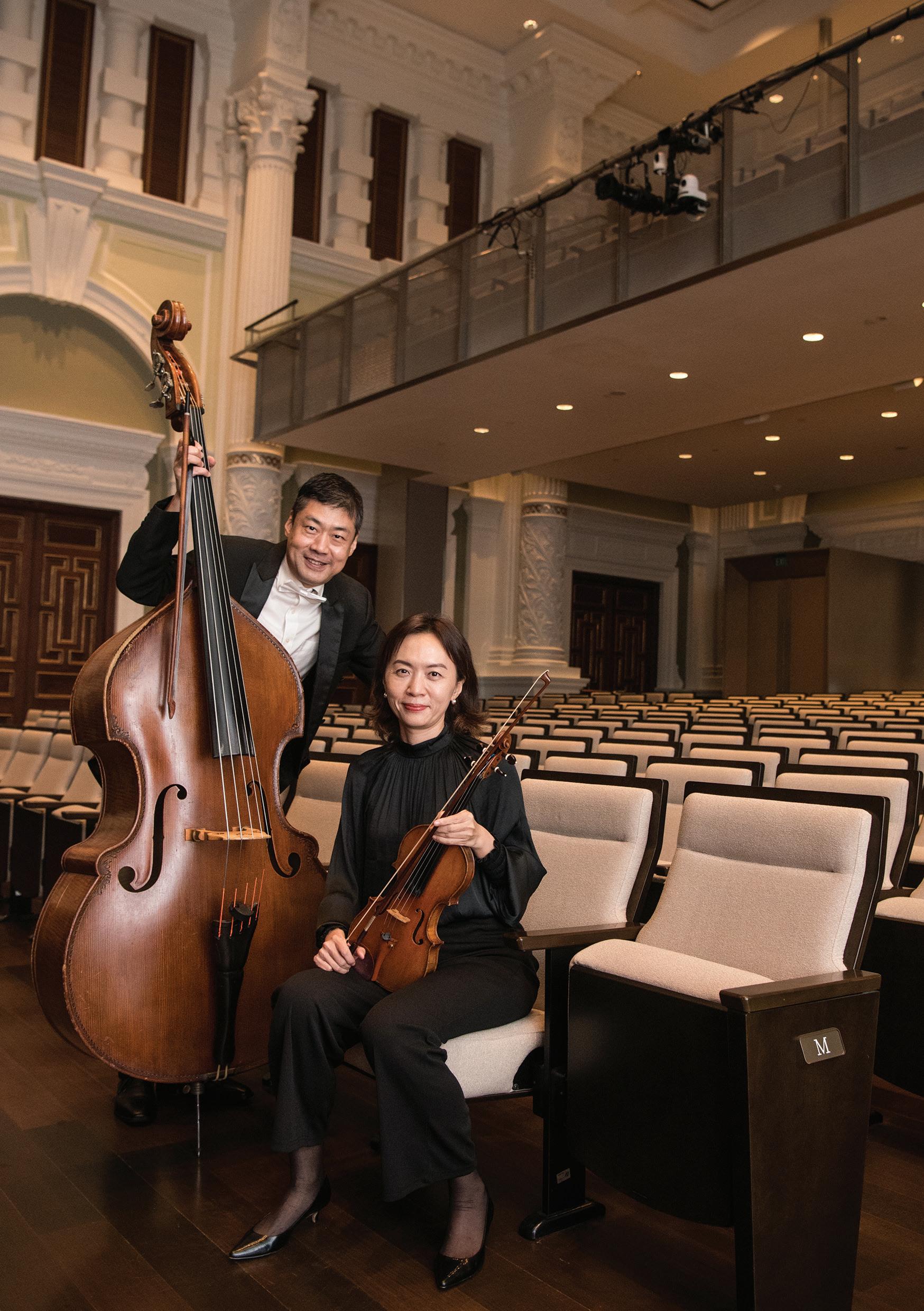
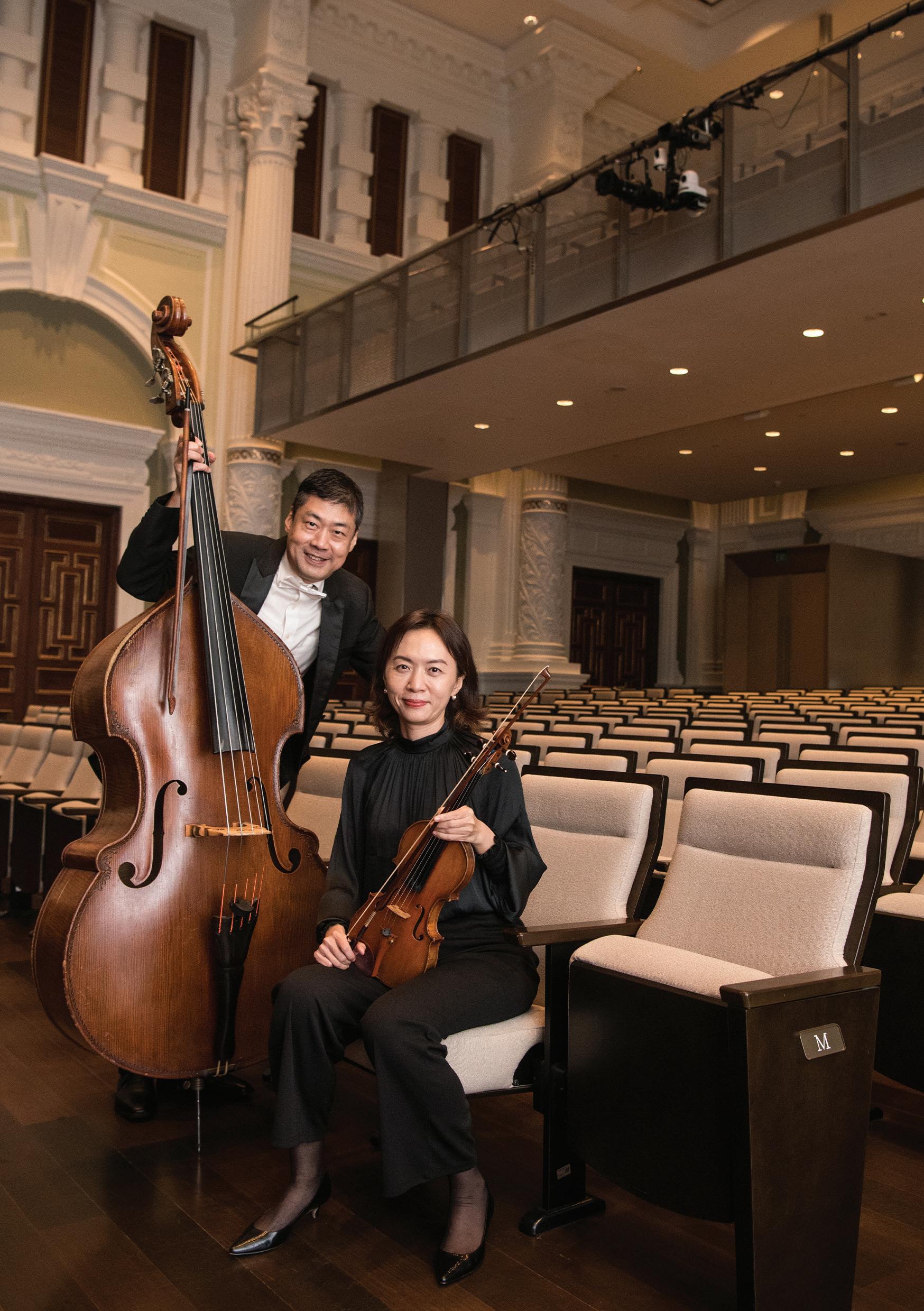
EMPEROR CONCERTO AND SYMPHONIE FANTASTIQUE SPIRIT OF THE ROMANTICS
Sat, 1 Jun 2024
Esplanade Concert Hall
Singapore Symphony Orchestra
Pierre Bleuse conductor
Paul Lewis piano*
KOH CHENG JIN
BEETHOVEN
BERLIOZ
Midnight Visions [SSO Commission/World Premiere]
Piano Concerto No. 5 in E-flat major, Op. 73 “Emperor”*
Intermission
Symphonie fantastique, Op. 14
Concert Duration: approximately 2 hrs 10 mins (including 20 mins intermission)
CHECK-IN TO TONIGHT'S CONCERT
Scan this QR code with the Singapore Symphony Mobile App.
10 mins 38 mins 20 mins 49 mins
KOH CHENG JIN (b. 1996)
Midnight Visions (2023) SSO Commission/World Premiere
In my experience, midnight has always been that strange, mystical hour where reality and fantasy collides. It is in such fragile solitude where I usually find myself treading between states of subconsciousness and ultra-consciousness, extreme vulnerability and extraordinary resolve, peaceful calmness and nightmarish conjurations. Midnight Visions is an attempt to document these contrasts that a fellow noctambulist may encounter in their deepest of dreams, whether awake, in its literal sense, or in slumber.
Can we really tell the difference sometimes?
Programme note by the composer, Koh Cheng Jin
Instrumentation
2 flutes, piccolo, 2 oboes, 2 clarinets, bass clarinet, 2 bassoons, contrabassoon, 4 horns, 3 trumpets, 3 trombones, timpani, percussion, harp, celesta, strings
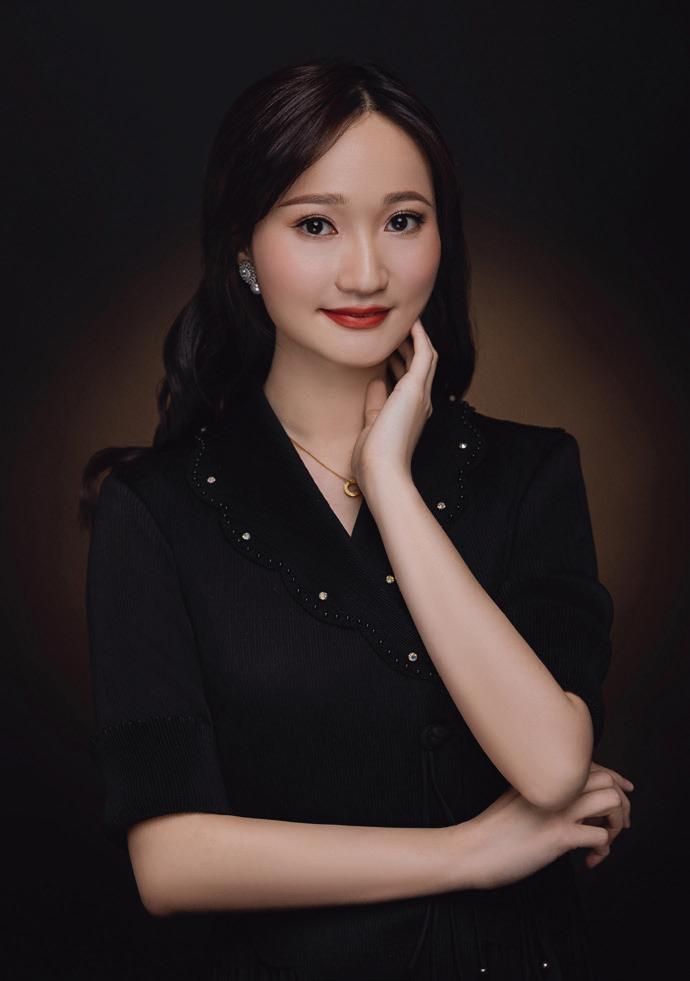
Writing music characterised by “lyrical centers,” that “channeled spirituality” and “vehemence” (The Straits Times), Singaporean composer and Yangqin performer Koh Cheng Jin strives to transcend cultural boundaries with imaginative storytelling and music-making. She was recently a grant winner of the New York State Council on the Arts and commissioned composer for the Smithsonian National Museum of Asian Art centennial celebrations and Singapore International Violin Competition. Her collaborators include the Ensemble InterContemporain, Central Conservatory of Music, Singapore Symphony Orchestra, Singapore Chinese Orchestra, Ding Yi Music Company, American Guild of Organists, Verona Quartet, among many others. Some of her most significant accolades are a BMI Foundation Young Composer (William Schuman) Prize, an ASCAP Morton Gould Young Composer Award, Palmer Dixon and Gena Raps Chamber Music Prizes (both from Juilliard), and the Society of New Music Brian Israel Prize. Festivals that have featured her music include the Singapore International Festival of Arts and Singapore International Piano Festival. Having completed her undergraduate and graduate studies at Juilliard, she is currently a PhD MacCracken composition fellow at New York University (GSAS).
EMPEROR CONCERTO AND SYMPHONIE FANTASTIQUE | 1 JUN 2024
27
LUDWIG VAN BEETHOVEN (1770–1827)
Piano Concerto No. 5 in E-flat major, Op. 73 “Emperor” (1809)
Allegro
Adagio un poco mosso
Rondo: Allegro
Beethoven – with his unkempt hair, his temperament, rudeness, slovenliness, and disregard for society and culture – was the unruly one in a balanced, ordered society of the early 1800s, a “mad genius” whose later music was teeming with dissonances; in it he personified heroes, triumph, a violent tempest, and even “fate knocking on the door”. People were wary of him, yet very much admired his music because he had struggled to overcome deafness and the challenges with it, composing great music for posterity. Beethoven was seen as a hero, a true artist who suffered for his art, and the first great Romantic who, in Berlioz's words, “opened a new world” to them all. The artist was seen as a visionary, an exceptional figure, an ‘idol’ who, through passions and inner struggles, creates morally uplifting and beautiful works to inspire audiences.
While Beethoven was composing his Fifth Piano Concerto (later to be nicknamed “Emperor”) in 1809, his real-life soundtrack was the constant booming of cannons by the French army bombing Vienna, and later, the military music of victory. He spent a great deal of time in his brother Kaspar’s cellar, covering his head with pillows to drown out the noise. At this point, as he was trying to protect his deteriorating hearing, he could also have been, paradoxically, more sensitive to loud noises.
Writing to his publisher Breitkopf und Härtel, he complained, “The whole course of events has affected me body and soul… What a
disturbing, wild life around me; nothing but drums, cannons, men, misery of all sorts.”
Beethoven may have written all these sounds into his concerto, which he completed by the end of 1809. The GermanAmerican musicologist and author Alfred Einstein suggests in Chapter 20 of his Essays on Music that the Emperor Concerto is “the apotheosis of the military concept… a sister work of the Eroica (symphony): the heroic element in the guise of the military”.
This last-completed piano concerto of Beethoven’s is also the largest in scale - a dazzling display of full chordal textures with a virtuosity that looks forward to the pianism of Liszt and the like. The nickname “Emperor” was not given by Beethoven (anyone familiar with the story of the Eroica Symphony would know how Napoleon’s ratings in Beethoven’s eyes had dropped drastically after he proclaimed himself emperor of France); but different sources cite various reasons as to how the concerto came to be called “Emperor”.
The first movement opens with loud chords from the orchestra, answered by the piano in quasi-cadenzas before the main theme is introduced by the violins. A rich array of material is introduced, and the development section which ensues has “the fury of a hailstorm”, in musicologist Sir Donald Tovey’s words.
EMPEROR CONCERTO AND SYMPHONIE FANTASTIQUE | 1 JUN 2024
I II III
28
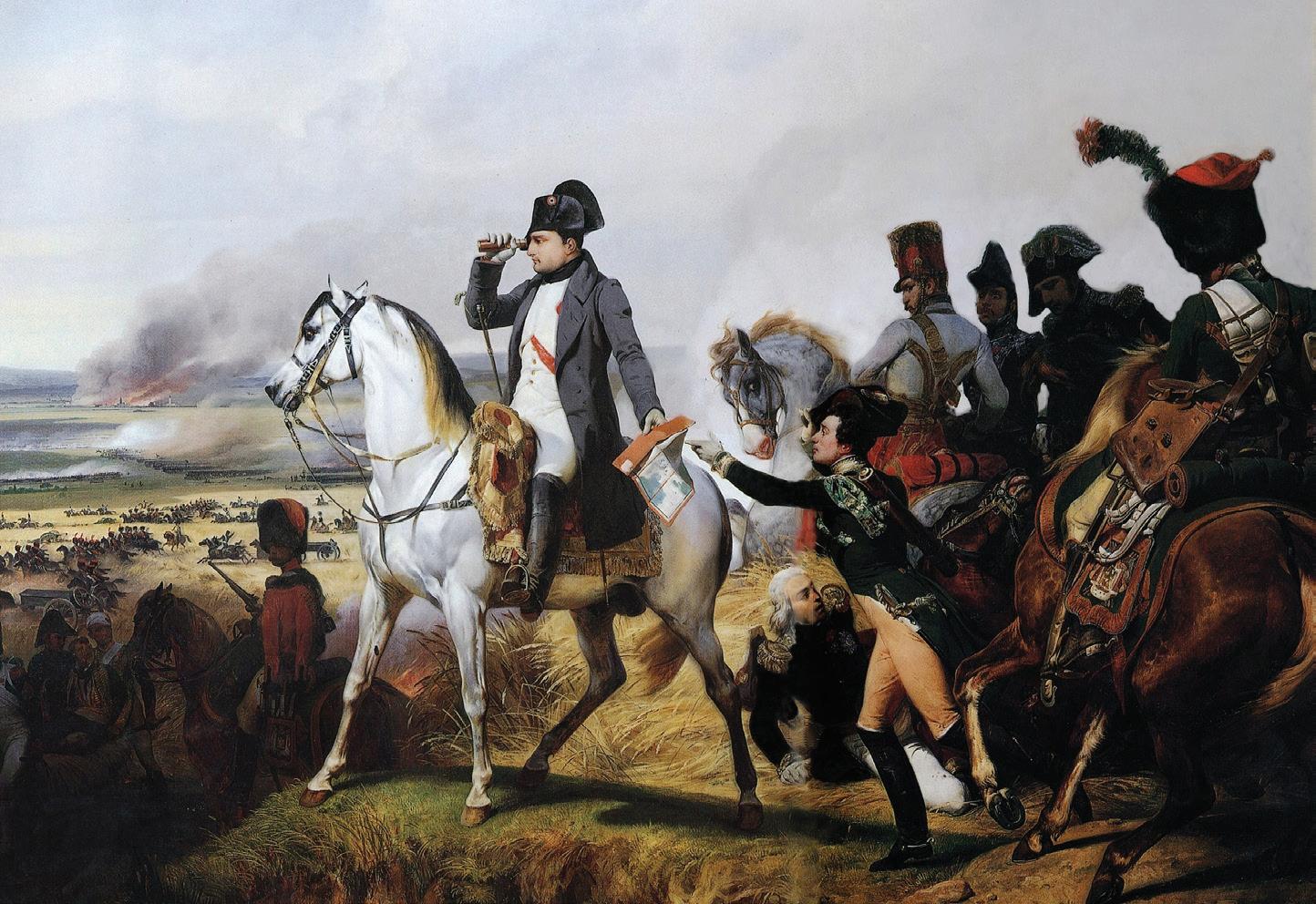
Battle of Wagram (In the vicinity of Vienna) 6 July 1809 by Horace Vernet
At the point the cadenza is supposed to begin, Beethoven scribbled “do not play a cadenza, but begin immediately what follows”, and supplied a written-out piano part that leads to the coda. This was Beethoven’s way of getting full control over what was played and not letting the soloist improvise (as was the usual practice), setting the trend that was to become a standard later on.
The second movement begins with a hymnlike chorale in the remote key of B major, the piano floating above the orchestral accompaniment in a quasi-nocturne of sorts, regal, majestic in its quiet beauty. A bounding ascent from the piano gently leads the music into the rollicking rondo finale, where episodes of different characters separate the return of the main theme.
Drum taps (faraway cannons?), shimmering chords and a glittering scale brings the movement to an exuberant close.
When the concerto was finally premiered in 1811 in Leipzig, it was hailed by the press as “without doubt one of the most original, imaginative, most effective but also one of the most difficult of all concertos”.
Instrumentation
2 flutes, 2 oboes, 2 clarinets, 2 bassoons, 2 horns, 2 trumpets, timpani, strings
World Premiere 13 Jan 1811, Leipzig
First performed by SSO 24 Jan 1979 (Ong Lip Tat, piano)
EMPEROR CONCERTO AND SYMPHONIE FANTASTIQUE | 1 JUN 2024
29
HECTOR BERLIOZ (1803–1869)
Symphonie fantastique, Op. 14 (1830)
Rêveries – Passions (Daydreams - Passions)
Un bal (A Ball)
Scène aux champs (Scenes in the Fields)
Marche au supplice (March to the Scaffold)
Songe d’une nuit de sabbat (Dream of a Witches’ Sabbath)
Hector Berlioz was born in 1803, the elder son of a medical doctor Louis-Joseph Berlioz and his wife, Marie-Antoinette. As a child he took flute lessons from his father and also learnt the guitar and flageolet, but never became proficient in any instrument. In 1821, he entered the school of medicine in Paris at the behest of his father, but he abandoned his medical studies a few years later to read music at the Paris Conservatoire, resulting in estrangement from his father.
In 1827, Berlioz saw an English production of Hamlet, where the lead role of Ophelia was played by an Irish woman named Harriet Smithson. Despite the language barrier (he spoke almost no English and could barely understand the dialogue during the play), he became so enamoured with Smithson that he tried all ways and means to get to know her. He wrote of his raging and passionate feelings to her in letters, but she refused to see him – she was frightened of him and heard rumours about his incriminatingly erratic behaviour and mental instability.
“Perhaps it’s good for one to suffer...Can an artist do anything if he’s happy? Would he ever want to do anything? What is art, after all, but a protest against the horrible inclemency of life?” – Aldous Huxley, Antic Hay, 1923
Huxley’s quote aptly sums up the Symphonie fantastique. Berlioz himself described, “the subject of this musical drama was none other than my love for Miss Smithson and the anguish and ‘bad dreams’ it had brought me.”
Turning instead to music, he wrote an almost autobiographical ‘fantastic’ symphony, which told the story of an artist’s obsession and unrequited love with his beloved. The beloved is represented with a musical theme which Berlioz calls the idée fixe. The idée fixe unites the entire symphony, appearing in various forms and guises in different movements but is always recognisable.
The orchestration, too, was as extravagant as the grand plans he had for the composition of the symphony. Scored for over 90 instruments, it was probably the largest number of instruments a composer had ever requested for at that time. Berlioz was a master of orchestration, and to him, the timbre of each instrument had its own character and emotional attributes. For example, the idée fixe in the first movement is sweetly innocent and charmingly graceful, introduced by the violins and the flute. The violin, to Berlioz (as he wrote in his Orchestration Treatise), is “the true female voice of the orchestra, a voice at once passionate and chaste, penetrating and soft...[a group of violins] produce the most wonderful shadings and arouse feelings
EMPEROR CONCERTO AND SYMPHONIE FANTASTIQUE | 1 JUN 2024
I II III IV V
30
which penetrate to the depth of the heart,” and the flute “is endowed with a character peculiarly its own and with special aptitude for expressing certain feelings”. This sweetly sung idée fixe returns in the fifth movement, grotesquely transformed into a witches’ dance, with taunting and mocking by the E-flat clarinet (“to parody and degrade a melody”) and piccolo (“for violent, incisive effects... or in a scene of fierce or infernal character.”)
The Symphonie defies the conventional 4-movement form in order to tell its story in five parts. Daydreams - Passions introduces us to the artist’s inner thoughts, as well as the object of his love, the elusive idée fixe. The music alternates between tenderness and outbursts depicting the artist’s frustration, eventually ending in a frenzy. The second part is set at A Ball where our artist tries to get the attention of his beloved amid the waltzing and twirling dancers.
The third part brings us to the countryside; cowherd calls open the Scenes in the Fields and we catch a glimpse of the artist’s inner state of mind: a sense of jealousy when he sees his beloved with someone else but restrains himself from erupting into jealous fury.
Berlioz’s darker side begins to reveal itself in the fourth movement. In it, the Artist poisons himself with opium because his love is unrequited. In his narcotic haze, he dreams that he has murdered his beloved, and of the March to the Scaffold for his execution. The bands play; the crowd jeers; his last thoughts are of his beloved before the guillotine blade drops. His head bounces down the steps, drums roll and the crowds cheer.
Dream of a Witches’ Sabbath is a gathering of all things ghastly for the Artist’s funeral. Shrieks and eerie groans set the atmosphere, and the artist’s beloved appears as a witch, the idée fixe transformed into a mocking and spiteful parody of the original. A bell tolls; bassoons and tuba play the Dies Irae, and the black sabbath party begins. The frenetic music condemns the Artist to eternal damnation, with his beloved watching on and gloating.
Smithson attended the second premiere of the Symphonie, finally understanding that it was about her. In a strange imitation of art, Berlioz guilt-tripped Smithson into marrying him, swallowing a lethal vial of opium in front of her until she agreed to marry him (after which he conveniently had an antidote on standby and consumed it). The pair married in 1833, although their marriage was short-lived, Berlioz supported Smithson until her death in 1854.
Programme notes by Natalie Ng
Instrumentation
2 flutes (1 doubling piccolo), 3 oboes (1 doubling cor anglais, 1 offstage), 2 clarinets (1 doubling E-flat clarinet), 4 bassoons, 4 horns, 2 trumpets, 2 cornets, 3 trombones, 2 tubas, timpani, bass drum, cymbals, suspended cymbal, snare drum, offstage chimes, 2 harps, strings
World Premiere 5 Dec 1830, Paris
First performed by SSO 27 Jun 1986
EMPEROR CONCERTO AND SYMPHONIE FANTASTIQUE | 1 JUN 2024 31

To Our Donor Patrons
We would like to express our deepest appreciation to the following individuals and organisations who support our mission to create memorable shared experiences with music in the past year.
Without your support, it would be impossible for the SSO to continue to strive for artistic excellence and touch the hearts of audiences.
PATRON SPONSOR
Tote Board Group
(Tote Board, Singapore Pools & Singapore Turf Club)
MAESTRO CIRCLE
Mr & Mrs Goh Yew Lin
Stephen Riady Group of Foundations
Estate of Tan Jiew Cheng
Temasek Foundation
The HEAD Foundation
CONCERTMASTER CIRCLE
Radhika Kilachand
Lee Foundation
Anonymous
SYMPHONY CIRCLE
Dr & Mrs Antoine & Christina Firmenich
Foundation Of Rotary Clubs (Singapore) Ltd
Christopher Fussner
Holywell Foundation
Paige Parker & Jim Rogers
The New Eden Charitable Trust
Jacqueline Yeh
GU BING JIE FIXED CHAIR VIOLA
CONCERTO CIRCLE
Cara & Tamara Chang
Geraldine Choong & Dennis Au
Geh Min
Miriam & Merle Hinrich
Kris Foundation
Mavis Lim Geck Chin
Dr Julie Lo
Dr Mendis Ajit Rohan
Andreas & Doris Sohmen-Pao
Ronald & Janet Stride
OVERTURE PATRONS
AIG Asia Pacific Insurance Pte Ltd
BINJAITREE
BreadTalk Group
Mahesh Buxani
Cham Gee Len
Prof Cham Tao Soon
Alan Chan
Prof Chan Heng Chee
Vivian P J Chandran
Chen Xiaoyan
Robert Chew
Chng Hak-Peng
Dr & Mrs Choy Khai Meng
CMIA Capital Partners Pte Ltd
Prof Arnoud De Meyer
DSGCP Mgt Pte Ltd
EFG Bank AG
F J Benjamin (Singapore) Pte Ltd
Dorian Goh & Rathi Ho
Haidilao Hotpot
Hong Leong Foundation
Vanessa & Darren Iloste
Indosuez Wealth Management
JCCI Singapore Foundation
Ross & Florence Jennings
Jeffrey Khoo
Dr & Mrs Adrian Koh
Kenneth Kwok
Lee Li Ming
Lee Ming San
TOP International Holding Pte Ltd
Dr Paul Tseng
UOB
VALIRAM
Geoffrey & Ai Ai Wong
Wong Hong Ching
Grace Yeh & Family
Yong Ying-I
Dr Thomas Zuellig & Mary Zuellig
Olivia Leong
Leong Wai Leng
LGT Bank (Singapore) Ltd
Lim Boon Heng
Logos Holdco Pte Ltd
Marina Bay Sands
Christopher & Clarinda Martin
Devika & Sanjiv Misra
Frans & Marie-Pierre Mol
NEON Global
Paul & Lena Ng
NSL Ltd
Christina Ong
PCS Pte Ltd
Planworth Global Factoring (S'pore) Pte Ltd
Prima Limited
Priscylla Shaw
Martin Siah & Wendy Long
Prof Gralf & Silvia Sieghold
Tan Kong Piat (Pte) Ltd
Tan Meng Cheng Ivan
Jamie Thomas
Tow Heng Tan
Tower Capital Asia
V3 Group Limited (OSIM)
Andrew & Stephanie Vigar
Woh Hup (Private) Limited
Yong Hon Kong Foundation
ZEGNA
Anonymous (6)

SERENADE PATRONS
Marcelo Viccario Achoa & Silvia Bordoni
Su Pin & Mervin Beng
John & Eliza Bittleston
Bryan Carmichael
Dr Stanley Chia
Alfred Chua Cheng Huat
Hartley & Hong Lynn Clay
Gan Seow Ann
Liwen & Steven Holmes
Shawn Jeon
Katherine Kennedy-White
Lorinne Kon
Mr & Mrs Paterson Lau
RHAPSODY PATRONS
Ang Jian Zhong
Hans Michael Brandes
Cheong Hee Kiat
Evelyn Chin
Adrian Chua Tsen Leong
Ee Kim Lock
Gallery Nawei Pte Ltd
The Gangoso Family
Goh Hui Kok Michael
Jerry Gwee
Ho Bee Foundation
Judy Hunt Hwang Chih Ming
Sylvie Khau
Belinda Koh
In Memory of Timothy Kok Tse En
Krishnan Family
Lau Soo Lui
Jennifer Lee
Sean Lee
Lee Yeow Wee David
Gin & Doug Leong
Charmaine Lim
Lim Kok Leong
Dr Victor Lim
JN Loh
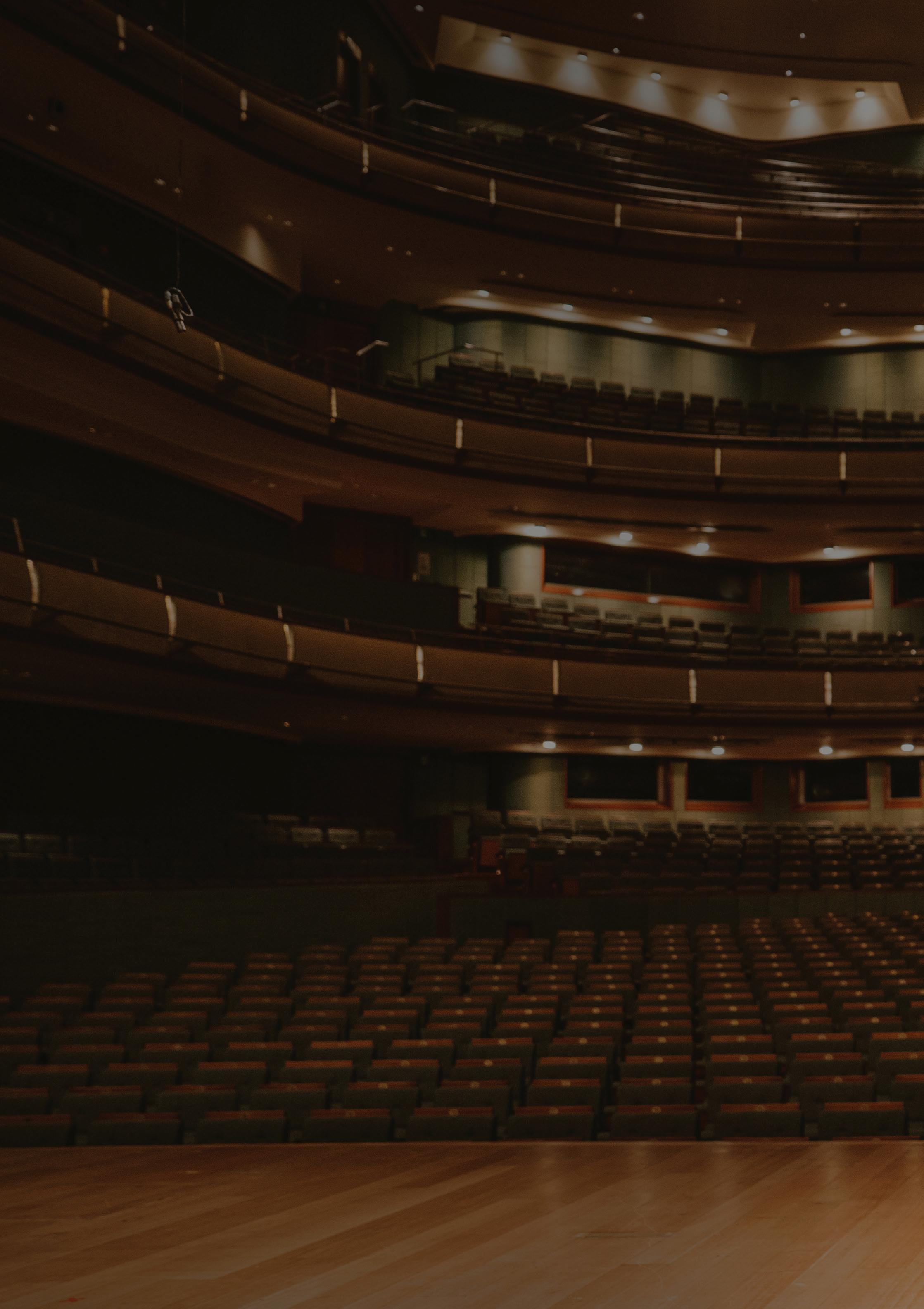
Kelvin Leong Leong Wah Kheong
Darren Lim & En Yu Tan
D-Y Lin
Michelle Loh
msm-productions
Ms Oang Nguyen & Dr Dang Vu
Bernard Ryan & Michael Rowe
SC Global Developments Pte Ltd
Tan Seow Yen
G. Yu & G. Hentsch
Anonymous (6)
Mak Mei Zi April
Prof Tamas Makany & Julie Schiller
Francoise Mei
Meng
Stephanie Mualim
Kenneth Oo
Esmé Parish & Martin Edwards
Terese Poh
Ian & Freda Rickword
Charles Robertson
Dr June & Peter Sheren
Dr Oskar & Linda Sigl
The Sohn Yong Family
Linda Soo Tan
Tan Choon Ngee
Gillian & Daniel Tan
Julian Tan
Aileen Tang
Tang See Chim
Anthony Tay
Teo Lay Lim
Amanda Walujo
Eric Wong
Wong Yan Lei Grace
Wu Peihui
Anonymous (5)
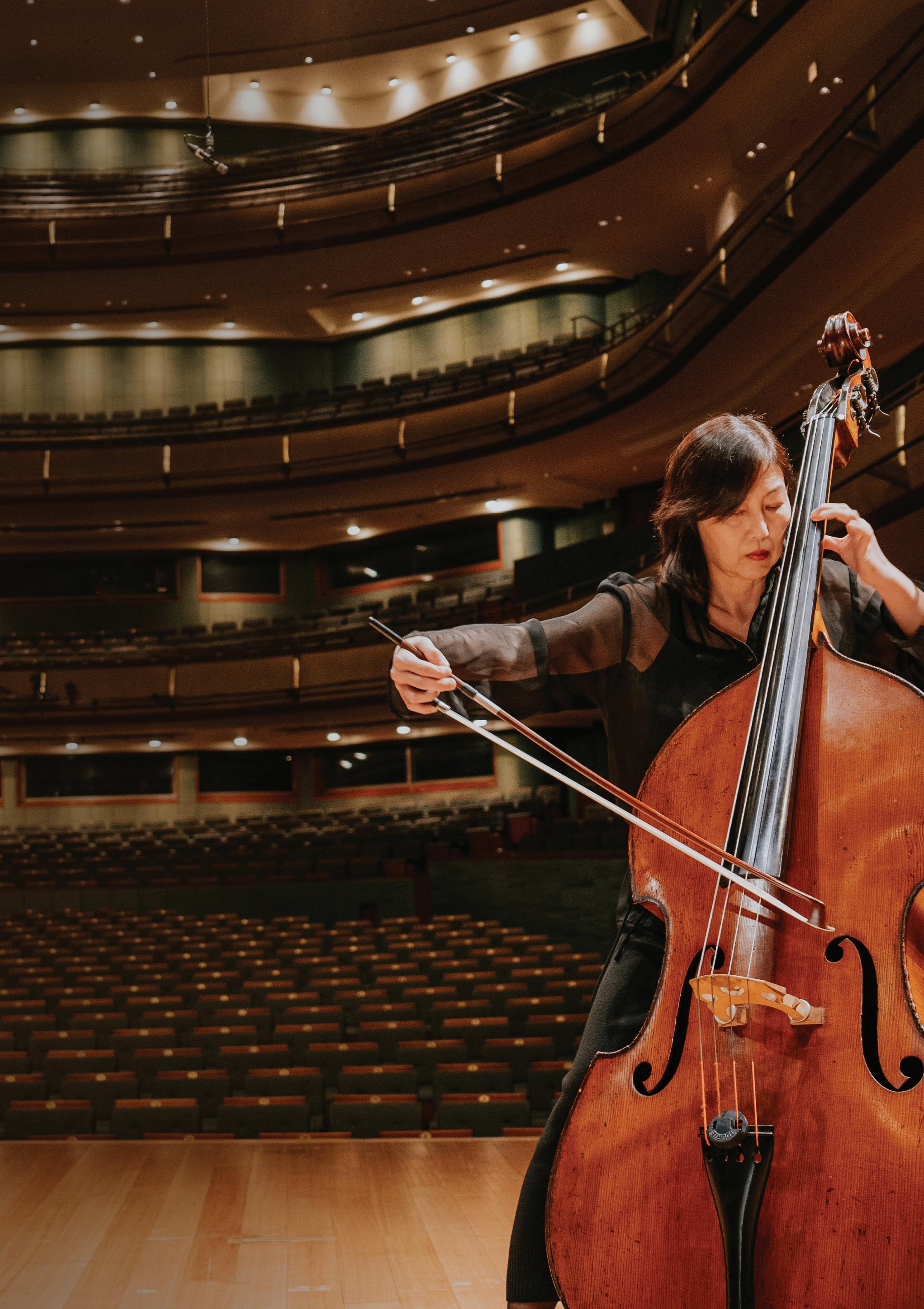
PRELUDE PATRONS
Aloha Dental Clinic
Welby Altidor
Nicolas Amstutz
Brenda Ang
Ang Seow Long
Oliver Balmelli
BDA Partners Pte Ltd
Maria Christina van der Burgt
Gavin Chan
Chang Chee Pey
Chang Julian
Jeanie Cheah
Cynthia Chee
Christopher Chen Li Hsian
Chen Yang Chin & Margaret Chen
Zhihong Chen
Cheng Eng Aun
Andrew Cheong Zhiren
Dr Chew Chee Tong
Jason & Jennifer Chew
Faith Chia
Chin Soon Yenn
Anthony Chng
Pamela Chong
Tiffany Choong & Shang Thong Kai
Nicholas Chor
Lenny Christina
Belinda Chua
Kevin & Dr Iroshini Chua
Pierre Colignon
CP
Khushroo Dastur
Linn de Rham
Jeremy Ee
J-P & Colette Felenbok
John & Pauline Foo
Foo Yunxuan
Christopher Franck
Gan Yit Koon
Goh Chiu Gak
Christopher & Constance Goh
Prof Goh Suat Hong
Yvette Goh
Heinrich Grafe
Parthesh Gulawani
Ilya Gutlin
HC & Jennifer
Linda Heng
Henry & Tiffany
Nishioka Hiroyuki
In Memory of 黄招娣 (Huang Zhao Di)
Arjun Jolly & Priyanka Nayar
Ad Ketelaars
Khim
Elizabeth Khoo
Ernest Khoo
Dr & Mrs Khoo Teng Kew
Dr Khoo Wei Ming
Khor Cheng Kian
Koh Siew Yen Terri Kye
Colin Lang
Dr & Mrs Winson Lay
SuYin L
Eugene & Caslin Lee
Kristen Lee
Lee Mun Ping
Dr Norman Lee
Lee Wei Jie
Colin & Janet Leong
Voon S Leong
Wendy Leong Marnyi
Li Danqi & Liu Yi
Edith & Sean Lim
Elaine Lim
Lim Hui Li Debby
Lim Yuin Wen
Rachel Lin
Ling Yang Chang
Sam & Claire Loh
Low Boon Hon
Alwyn Loy
Benjamin Ma
Bahareh Maghami
KAREN YEO FIXED CHAIR DOUBLE BASS
Andre Maniam
Mattopher
Norbert Meuser
Dr Tashiya Mirando
John Morley
Ngiam Shih Chun
Mdm Ngo Hwee Bee
Joy Ochiai
Ong Chee Siong
Ong Kay Jin Jason
Matthew Ong
Xinyi Ong
Pigar & William
Robert Khan & Co Pte Ltd
Danai Sae-Han
Jason Salim & Tan Hwee Koon
Gayathri & Steven Santhi-McBain
Kadir Satar
Sayawaki Yuri
Thierry Schrimpf
Shi Lei
Small Story Singapore
Marcel Smit & Hanneke Verbeek
Sharon Son
Superb Cleaning Pte Ltd
Casey Tan Khai Hee
Dr Giles Tan Ming Yee
Gordon HL Tan
Jane Tan
K.H. Tan
Dr Tan Lay Kok
Lincoln Tan
Min Tan
Tan Peng Peng
Tan Siew Ling Celine
Tan Yee Deng
David Teng
Teo Eng Chai
Teo Kien Boon
Kyra Teo
Teo Wee Poh
Alessandro Tesei
Alicia Thian & Brian Bonde
Alan & Akashnee Thompson
The Tomsik Family
Wang Meng
Wang Pei Zhong
Kris Wiluan
Dr Wong Hin Yan
Jinny Wong
Wicky Wong
World Future Enterprise Pte Ltd
Valerie Wu
Elaine Xu
Yan Xia
Ye Xuan
Yeow Ooh Teng
Lillian Yin
Yong Seow Kin
Zhang Zheng
Zheng Hongbo
Zhu Yulin
Anonymous (56)

This list reflects donations that were made from 1 Apr 2023 to 31 Mar 2024. We would like to express our sincere thanks to donors whose names were inadvertently left out at print time.
The Singapore Symphony Group is a charity and a not-for-profit organisation. Singapore tax-payers may qualify for 250% tax deduction for donations made. You can support us by donating at www.sso.org.sg/donate or www.giving.sg/sso.
SUPPORT THE SSO
How can you help?
While SSO is supported partially by funding from the Singapore government, a significant part can only be unlocked as matching grants when we receive donations from the public. If you are in a position to do so, please consider making a donation to support your orchestra – Build the future by giving in the present.
As a valued patron of the SSO, you will receive many benefits.
COMPLIMENTARY TICKETS*
Subscription/ VCHpresents/ Family/SIPF
Gala/Christmas/ Pops
SSO Special Gala Concerts
DONOR RECOGNITION & PUBLIC ACKNOWLEDGEMENT
Concert booklets and website
Patron of the Arts Nomination
Donors’ Wall at VCH
OTHER BENEFITS
Invitation to special events
Donations of $100 and above will entitle you to priority bookings, and discounts^ on SSG Concerts. For tax residents of Singapore, all donations may be entitled to a tax deduction of 2.5 times the value of your donation.
*Complimentary ticket benefits do not apply to Esplanade & Premier Box seats, or supporters who give through a fundraising event.
^Discounts are not applicable for purchase of Esplanade & Premier Box seats.
Through the SSO and its affiliated performing groups, we spread the love for music, nurture talent and enrich our diverse communities.
The Singapore Symphony Orchestra is a charity and not-for-profit organisation. To find out more, please visit www.sso.org.sg/support-us, or write to Nikki Chuang at nikki@sso.org.sg
Prelude $1,000 - $2,499 Rhapsody $2,500 - $4,999 Serenade $5,000 - $9,999 Overture $10,000 - $24,999 Concerto $25,000 - $49,999
With You, WE CAN BUILD The Future of Music.
Symphony $50,000 & above 6 tickets 10 tickets 12 tickets 16 tickets 20 tickets 40 tickets – – 2 tickets 4 tickets 6 tickets 20 tickets – – – – 2 tickets 4 tickets
– – – – – –
–
SPECIAL RECOGNITION
A Standing Ovation
We recognise major gifts that help sustain the future of the Singapore Symphony Group. The recognition includes naming of a position in the SSO or in our affiliated performance groups such as the Singapore National Youth Orchestra and the Singapore Symphony Choruses.
SSO CONCERTMASTER GK GOH CHAIR
In July 2017, the SSO established the GK Goh Chair for the Concertmaster. Mr Goh Geok Khim and his family have been long-time supporters of the national orchestra. We are grateful for the donations from his family and friends towards this Chair, especially Mr and Mrs Goh Yew Lin for their most generous contribution.
Mr Igor Yuzefovich was the inaugural GK Goh Concertmaster Chair. The position is currently vacant.

NG PEI-SIAN PRINCIPAL CELLO
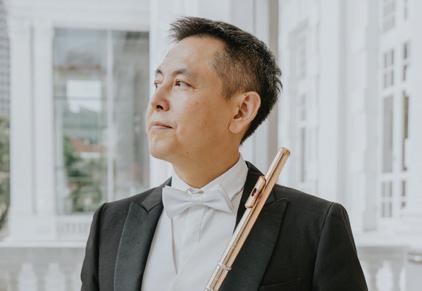
JIN TA PRINCIPAL FLUTE
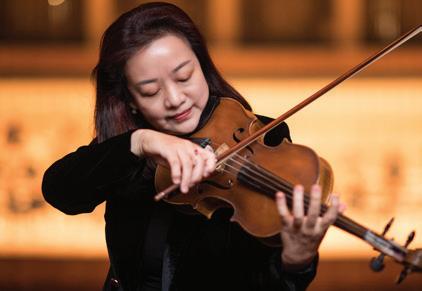
ZHANG PRINCIPAL VIOLA
SSO PRINCIPAL CELLO
THE HEAD FOUNDATION CHAIR
In recognition of a generous gift from The HEAD Foundation, we announced the naming of our Principal Cello, “The HEAD Foundation Chair” in November 2019. The Chair is currently held by Principal Cellist Ng Pei-Sian.
SSO PRINCIPAL FLUTE
STEPHEN RIADY CHAIR
In recognition of a generous gift from Dr Stephen Riady, we announced in May 2022 the naming of our Principal Flute, “Stephen Riady Chair”. The position is currently held by our Principal Flutist Jin Ta.
SSO PRINCIPAL VIOLA
TAN JIEW CHENG CHAIR
In recognition of a generous gift from the Estate of Tan Jiew Cheng, we announced in February 2024 the naming of our Principal Viola, “Tan Jiew Cheng Chair”. The position is currently held by our Principal Violist Manchin Zhang.
For more information, please write to director_development@sso.org.sg.
MANCHIN
CORPORATE PATRONAGE
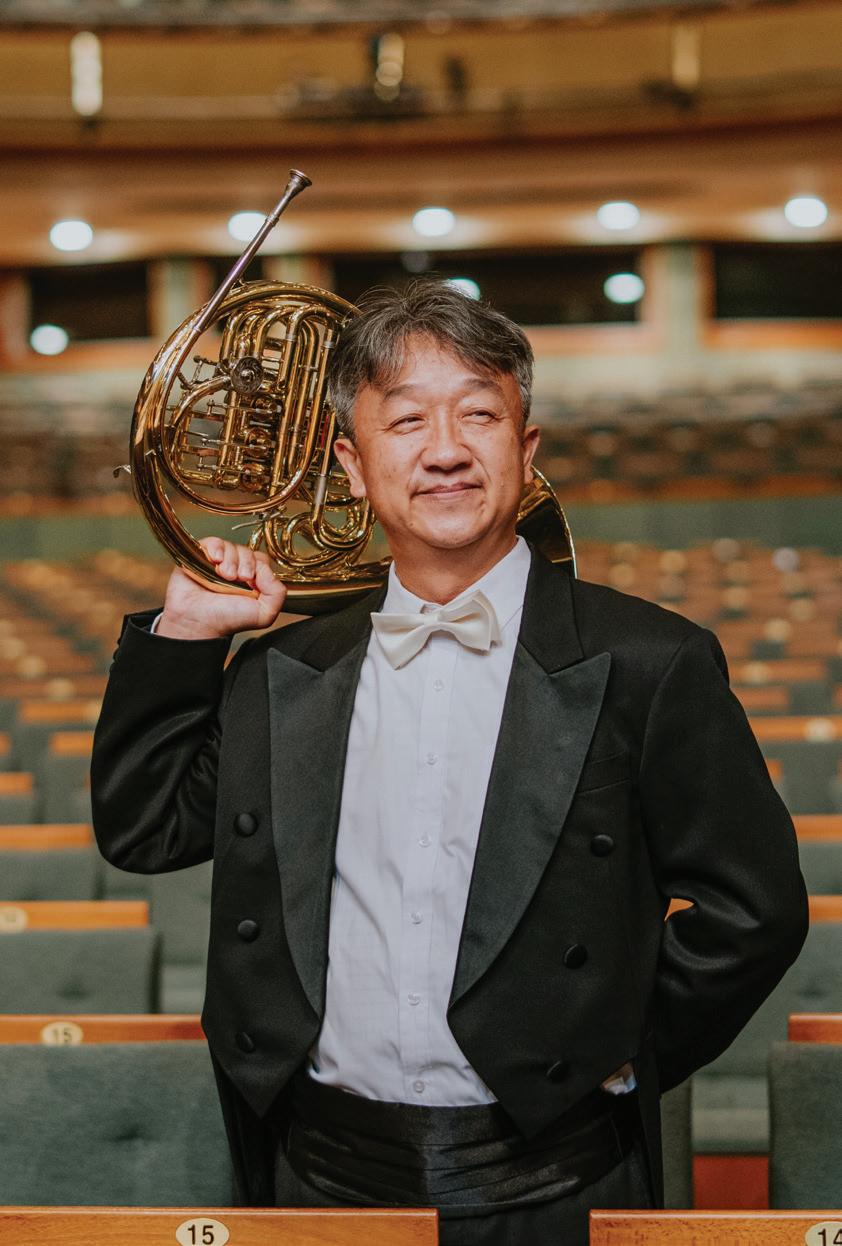
HEARTFELT THANKS TO OUR CORPORATE PATRONS
Temasek Foundation
The HEAD Foundation
Stephen Riady Group of Foundations
Lee Foundation
Holywell Foundation
Foundation Of Rotary Clubs (Singapore) Ltd
The New Eden Charitable Trust
TransTechnology Pte Ltd
VALIRAM
IN-KIND SPONSORS
Raffles Hotel Singapore
SMRT Corporation
Singapore Airlines
Conrad Centennial Singapore
Symphony 924
Form a special relationship with Singapore’s national orchestra and increase your brand recognition among an influential and growing audience.
CORPORATE GIVING
We provide our Corporate Patrons with impressive entertainment and significant branding opportunities. Through our tailored packages, corporates may benefit from:
• Publicity and hospitality opportunities at an SSO concert or your private event,
• Acknowledgement and mentions in SSO’s key publicity channels,
• National Arts Council (NAC) Patron of the Arts nominations,
• Tax benefits.
Packages start at $10,000 and can be tailored to your company’s branding needs.
PARTNERSHIP
We partner with various corporates through tailored in-kind sponsorship and exchange of services. Current and recent partnerships include Official Hotel, Official Airline, and we offer other exciting titles.
For more details, please write to Chelsea Zhao at chelsea.zhao@sso.org.sg.
GAO JIAN ASSOCIATE PRINCIPAL HORN
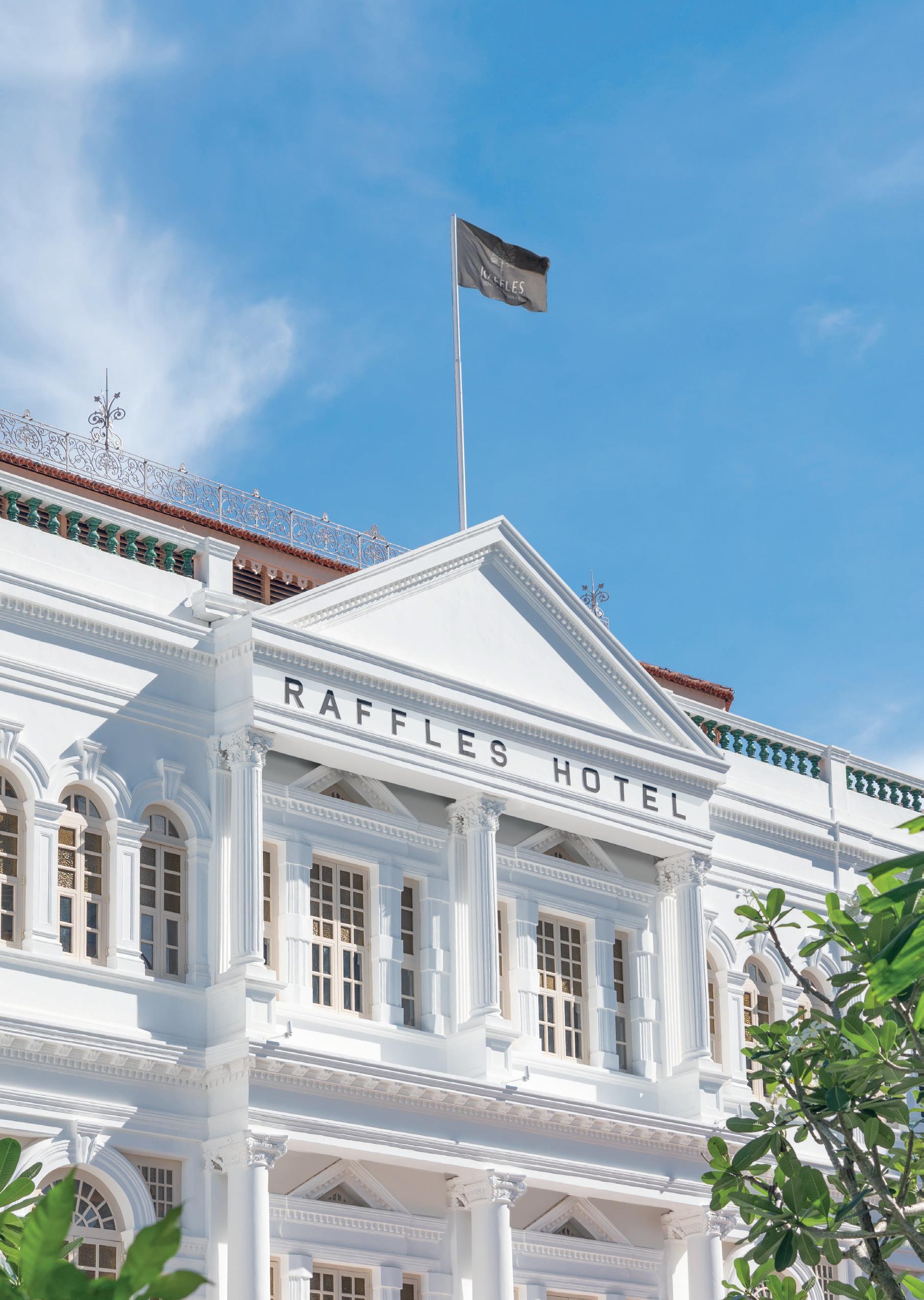
RAFFLES.COM/SINGAPORE A LANDMARK DESTINATION, A legendary WELCOME


BOARD OF DIRECTORS & COMMITTEES
CHAIR
Goh Yew Lin
BOARD OF DIRECTORS
Yong Ying-I (Deputy Chair)
Geoffrey Wong (Treasurer)
Chang Chee Pey
Chng Kai Fong
Prof Arnoud De Meyer
Warren Fernandez
Kenneth Kwok
Liew Wei Li
Sanjiv Misra
Lynette Pang
Prof Qin Li-Wei
Yasmin Zahid
Yee Chen Fah
Andrew Yeo Khirn Hin
NOMINATING AND EXECUTIVE COMMITTEE
Goh Yew Lin (Chair)
Chng Kai Fong
Prof Arnoud De Meyer
Lynette Pang
Geoffrey Wong
Yong Ying-I
HUMAN RESOURCES COMMITTEE
Yong Ying-I (Chair)
Chng Kai Fong
Prof Arnoud De Meyer
Heinrich Grafe
Doris Sohmen-Pao
INVESTMENT COMMITTEE
Geoffrey Wong (Chair)
Sanjiv Misra
David Goh
Alex Lee
AUDIT COMMITTEE
Yee Chen Fah (Chair)
Warren Fernandez
Lim Mei
Jovi Seet
SNYO COMMITTEE
Liew Wei Li (Chair)
Prof Qin Li-Wei
Benjamin Goh
Vivien Goh
Dr Kee Kirk Chin
Clara Lim-Tan
SSO MUSICIANS’ COMMITTEE
Mario Choo
David Smith
Wang Xu
Christoph Wichert
Yang Zheng Yi
Elaine Yeo
Zhao Tian
SSO COUNCIL
Alan Chan (Chair)
Odile Benjamin
Prof Chan Heng Chee
Dr Geh Min
Heinrich Grafe Khoo Boon Hui
Lim Mei
Paige Parker
Dr Stephen Riady Priscylla Shaw
Prof Gralf Sieghold
Andreas Sohmen-Pao
Prof Bernard Tan
Dr Tan Chin Nam
Tan Soo Nan
Wee Ee Cheong
SINGAPORE SYMPHONY GROUP ADMINISTRATION
CHIEF EXECUTIVE OFFICER
Kenneth Kwok
DEPUTY CEO, PROGRAMMES & PRODUCTION
Kok Tse Wei
DEPUTY CEO, PATRONS & CORPORATE SERVICES
Jenny Ang
ORGANISATION DEVELOPMENT
Lillian Yin
CEO OFFICE
Shirin Foo
Musriah Bte Md Salleh
ARTISTIC PLANNING
Hans Sørensen (Head)
Artistic Administration
Jodie Chiang
Jocelyn Cheng
Michelle Yeo
OPERATIONS
Ernest Khoo (Head)
Library
Lim Lip Hua
Wong Yi Wen
Orchestra Management
Chia Jit Min (Head)
Charis Peck Xin Hui
Kelvin Chua
Production Management
Noraihan Bte Nordin
Nazem Redzuan
Leong Shan Yi
Asyiq Iqmal
Ramayah Elango
Khairi Edzhairee
Khairul Nizam
Benjamin Chiau
COMMUNITY IMPACT
Community Engagement
Kua Li Leng (Head)
Whitney Tan
Lynnette Chng
Samantha Lim
Terrence Wong
Choral Programmes
Kua Li Leng (Head)
Regina Lee
Chang Hai Wen
Mimi Syaahira
Singapore National Youth
Orchestra
Ramu Thiruyanam (Head)
Tang Ya Yun
Tan Sing Yee
Ridha Ridza
ABRSM
Patricia Yee
Lai Li-Yng
Joong Siow Chong
Freddie Loh
May Looi
William Teo
PATRONS
Development
Chelsea Zhao (Head)
Nikki Chuang
Sarah Wee
Sharmilah Banu
Eunice Salanga
PATRONS
Digital & Marketing Communications
Cindy Lim (Head)
Chia Han-Leon
Calista Lee
Germaine D’Rozario
Myrtle Lee
Hong Shu Hui
Jana Loh
Sherilyn Lim
Elizabeth Low
Corporate Communications
Elliot Lim
Customer Experience
Randy Teo
Dacia Cheang
Joy Tagore
CORPORATE SERVICES
Finance, IT & Facilities
Rick Ong (Head)
Alan Ong
Goh Hoey Fen
Loh Chin Huat
Md Zailani Bin Md Said
Human Resources & Administration
Valeria Tan (Head)
Janice Yeo
Fionn Tan
Netty Diyanah Bte Osman
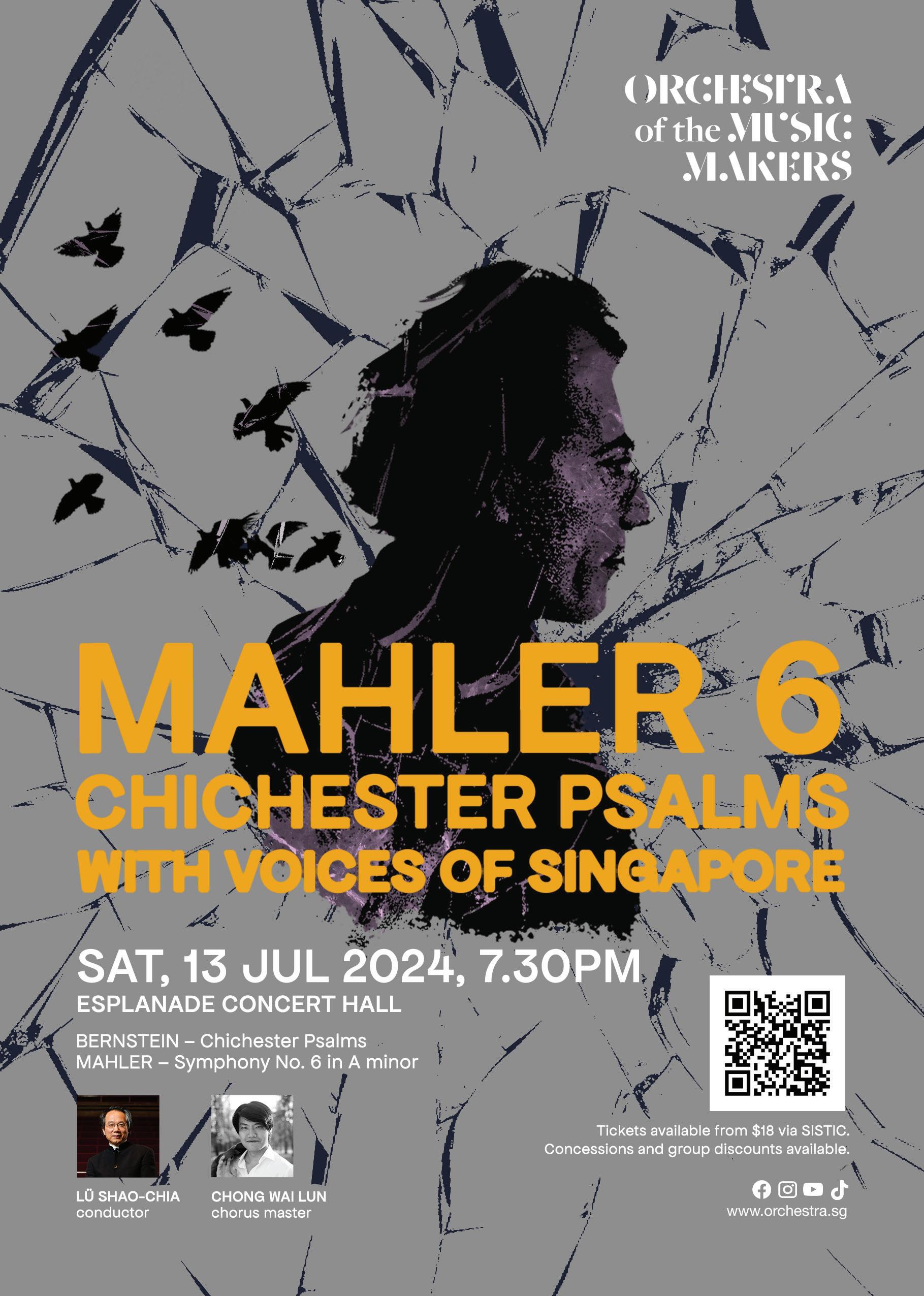

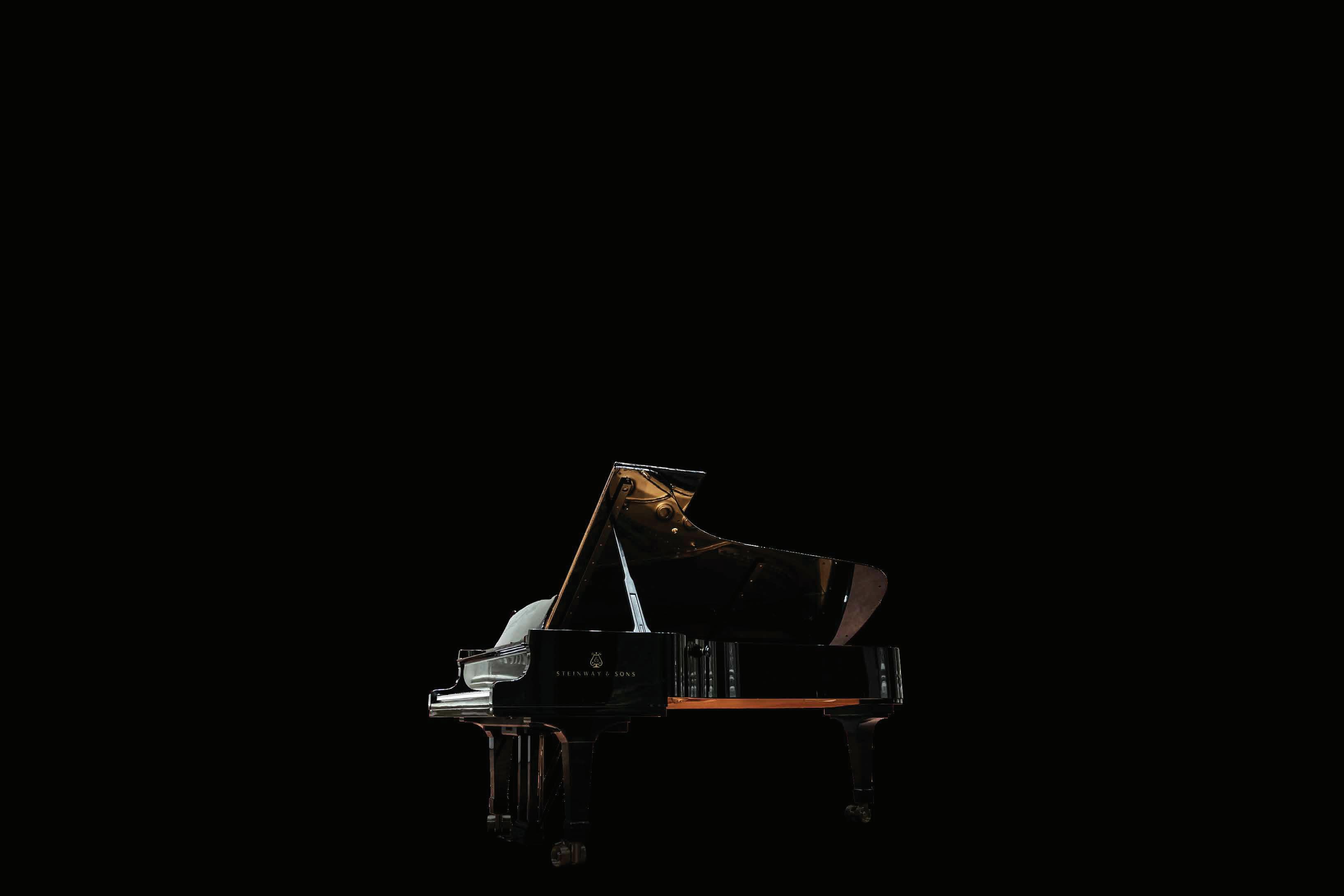



& Mrs Goh Yew Lin


The vision of the Singapore Symphony Group is to be a leading arts organisation that engages, inspires and reflects Singapore through musical excellence. Our mission is to create memorable shared experiences with music. Through the SSO and its affiliated performing groups, we spread the love for music, nurture talent and enrich our diverse communities. The Singapore Symphony Orchestra is a charity and not-for-profit organisation. You can support us by donating at www.sso.org.sg/donate
SEASO N P A R T N E R S
O R DO N O
A T C H E D B Y S U P P O R TED B Y P A T R O N S P O N S O R
SEASO N P A T R ON S MAJ
R S M
Mr
Estate of Tan Jiew Cheng
Official Radio St ation
Official Air line
Official Outdoor Media Par tner
Official Community Par tner
Official Hotel
Stephen Riady Group of Foundations













































